Sydney, the vibrant and dynamic city of Australia, harbours a great number of avian species, which are some of the most fascinating creatures on earth. With its warm climate and favourable habitats, Sydney offers a diverse range of birds, ranging from colourful lorikeets to majestic eagles.
The birds of Sydney are not only visually stunning but also offer a unique insight into the city’s natural ecosystem.
In this article, we will take a closer look at the birds of Sydney and examine their characteristics, behaviours, and habitats.
1. Common Myna
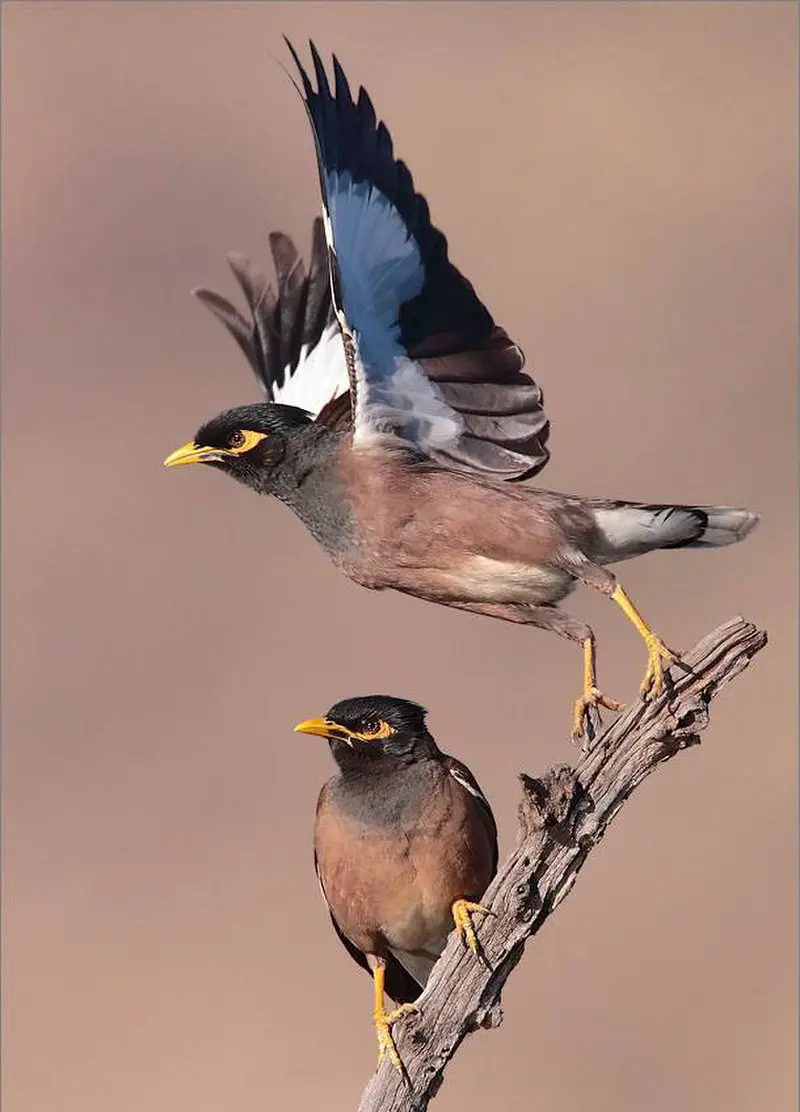
The Common myna is a bird native to Asia and belongs to the Sturnidae family. It has an omnivorous diet, strong territorial instinct and is well adapted to urban environments.
With its range increasing rapidly, it was declared one of the most invasive species by IUCN in 2000. Its distinctive features include black head with a yellow bill, brown body and white tips on wings & tail feathers.
The common myna communicates through loud clicking noises that can easily be heard from long distances in both rural as well as urban areas alike.
They are known for their intelligence; they mimic sounds such as human speech or other birds’ calls making them popular pets among households too.Scientific classification:
| Kingdom | Animalia |
| Phylum | Chordata |
| Class | Aves |
| Order | Passeriformes |
| Family | Sturnidae |
| Genus | Acridotheres |
| Species | A. tristis |
Also Featured In: Most Common Types of Bangladeshi Birds, Birds of Kauai, Hawaii
2. Ibis
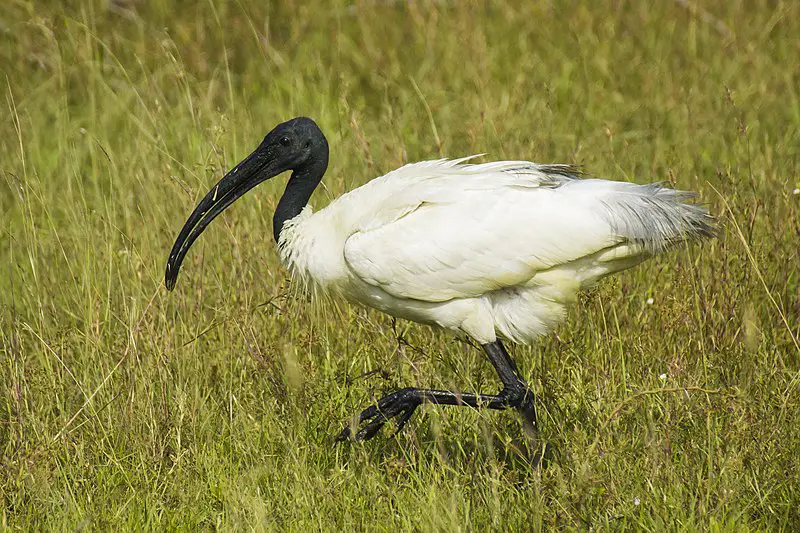
Ibis is a type of long-legged wading bird belonging to the family Threskiornithidae. They inhabit wetlands, forests and plains across many parts of the world.
The name ibis comes from Latin and Ancient Greek words for this group of birds which also can be found in scientific names like Bubulcus ibis – mistakenly identified as bovine animal in 1757.
Ibises have characteristically curved bills used to capture food items such as fishes, reptiles or frogs while they are searching through mud or shallow water with their feet.
Furthermore, these birds usually live in large flocks which helps them protect themselves against predators by keeping an eye out on each other’s safety during hunting times.Scientific classification:
| Kingdom | Animalia |
| Phylum | Chordata |
| Class | Aves |
| Order | Pelecaniformes |
| Family | Threskiornithidae |
| Subfamily | Threskiornithinae Poche, 1904 |
Also Featured In: Egyptian Birds, Flight Birds You Should Know
3. Honeyeaters
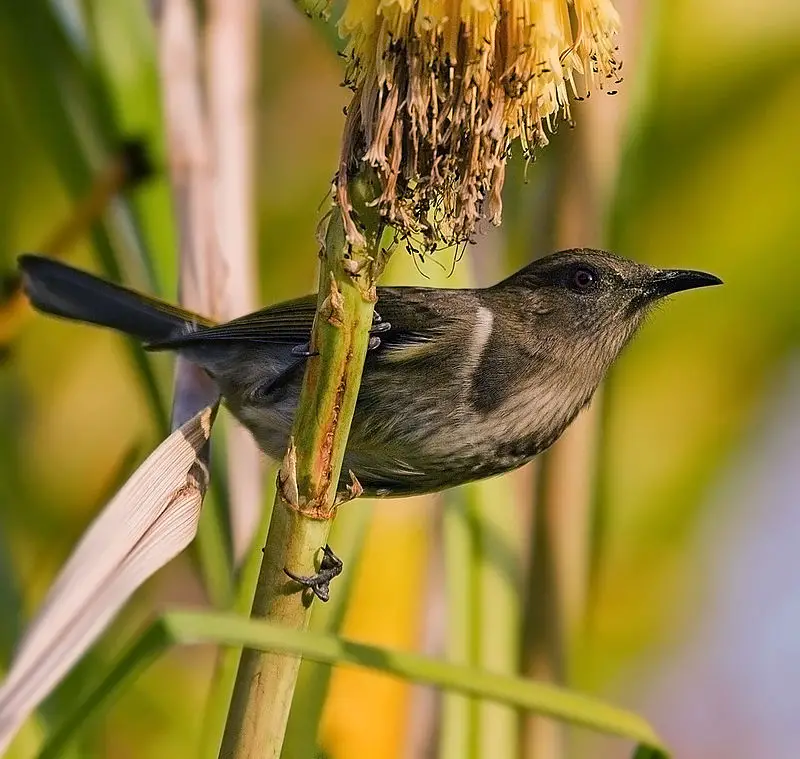
Honeyeaters are a unique and diverse family of birds, with species ranging in size from small to medium.
Found mainly in Australia and New Guinea, they can also be found as far east as Samoa and Tonga, or on islands such as Wallacea north or west of New Guinea.
Honeyeaters feed mainly on nectar but will consume insects if necessary for additional nutrition. They have specialized brush-like tongues that help them extract the nectar efficiently.
Their bright colours tend to make them stand out among other bird families making them easy to spot when out observing wildlife.Scientific classification:
| Kingdom | Animalia |
| Phylum | Chordata |
| Class | Aves |
| Order | Passeriformes |
| Superfamily | Meliphagoidea |
| Family | Meliphagidae Vigors, 1825 |
Also Featured In: Most common birds in Australia, Guam Birds You Need to See
4. Australian Magpie
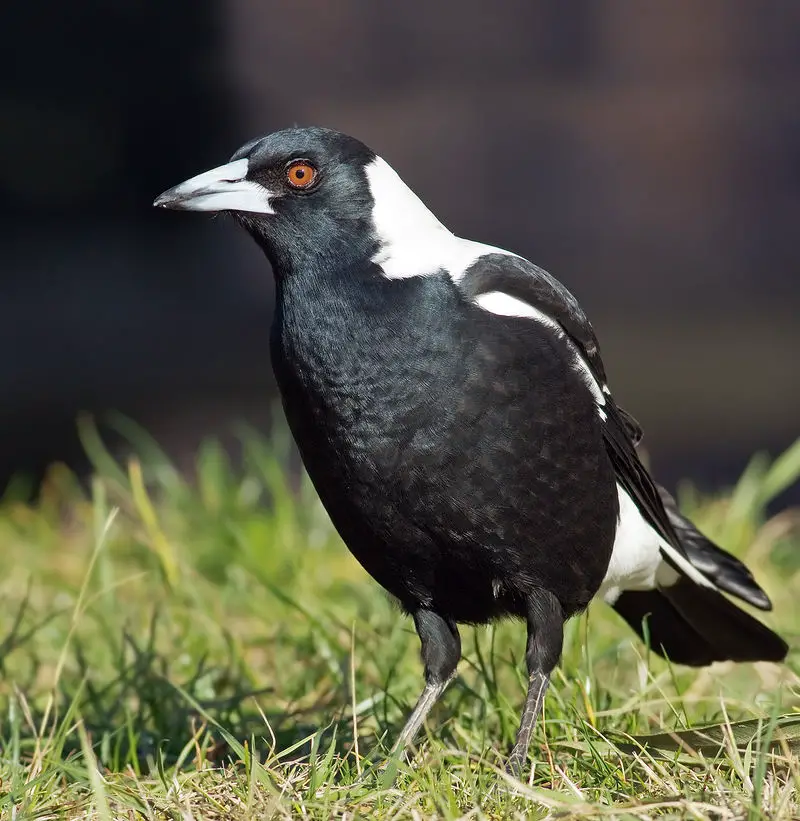
The Australian magpie is a beautiful passerine bird native to Australia and southern New Guinea.
It has distinctive black and white plumage, with males having more brightly coloured feathers than females.
The species is part of the Artamidae family, so it’s closely related to the Black Butcherbird (Melloria quoyi). Nine different subspecies have been recognised which vary slightly in size and colouring.
Magpies are omnivorous birds meaning they eat both plants and animals; their diet consists mainly of insects, small reptiles and amphibians as well as some grains such as wheat or oats.
They also enjoy drinking from pools of water on hot days. In general these birds display high intelligence when compared to other avian species – able to mimic human speech patterns quite accurately even in captivity.
Overall this majestic creature deserves our appreciation for its beauty, loyalty and fascinating behaviour.Scientific classification:
| Kingdom | Animalia |
| Phylum | Chordata |
| Class | Aves |
| Order | Passeriformes |
| Family | Artamidae |
| Genus | Gymnorhina Gray, GR, 1840 |
| Species | G. tibicen |
Also Featured In: Black And White Birds You Don’t Know About,
5. Laughing Kookaburra
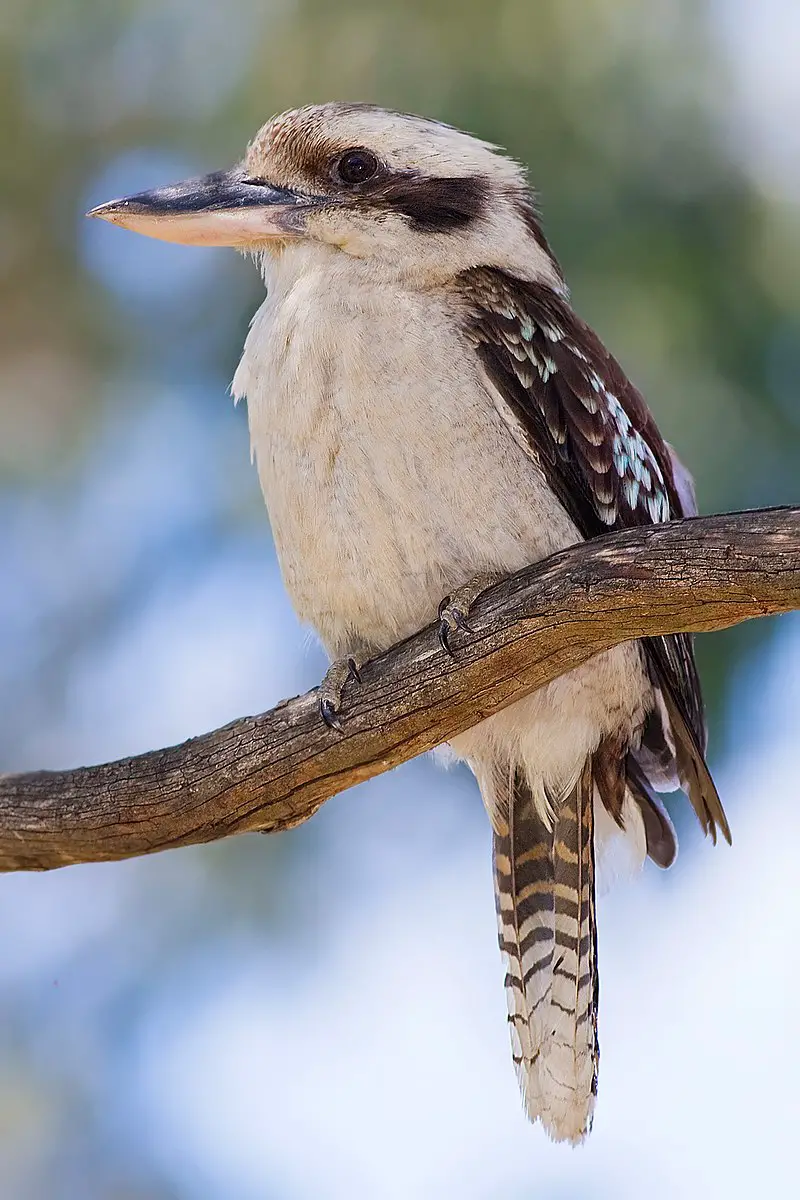
The Laughing Kookaburra is a beautiful bird with distinct features. It has a whitish head and brown eye-stripe, along with an upper body that is predominantly dark brown.
On its wings are mottled light blue patches which make it stand out even more. Its underparts are cream white while its tail is barred in rufous and black colours.
Male and female birds have the same plumage, making them easy to identify as belonging to this species of kingfisher subfamily Halcyoninae.
They can be found living around woodlands or open forests throughout eastern Australia, where they feed on small reptiles, insects or amphibians by swooping down from a perch above them before carrying their prey back up again for consumption.
The sound of their loud distinctive call – “koo-kaa-brrr” – brings joy to many Australians who appreciate these wonderful creatures inhabiting our landScientific classification:
| Kingdom | Animalia |
| Phylum | Chordata |
| Class | Aves |
| Order | Coraciiformes |
| Family | Alcedinidae |
| Subfamily | Halcyoninae |
| Genus | Dacelo |
| Species | D. novaeguineae |
Also Featured In: Birds You’ll Find in Zoo, Birds Typically Found in Australian Rainforest
6. Rainbow Lorikeet
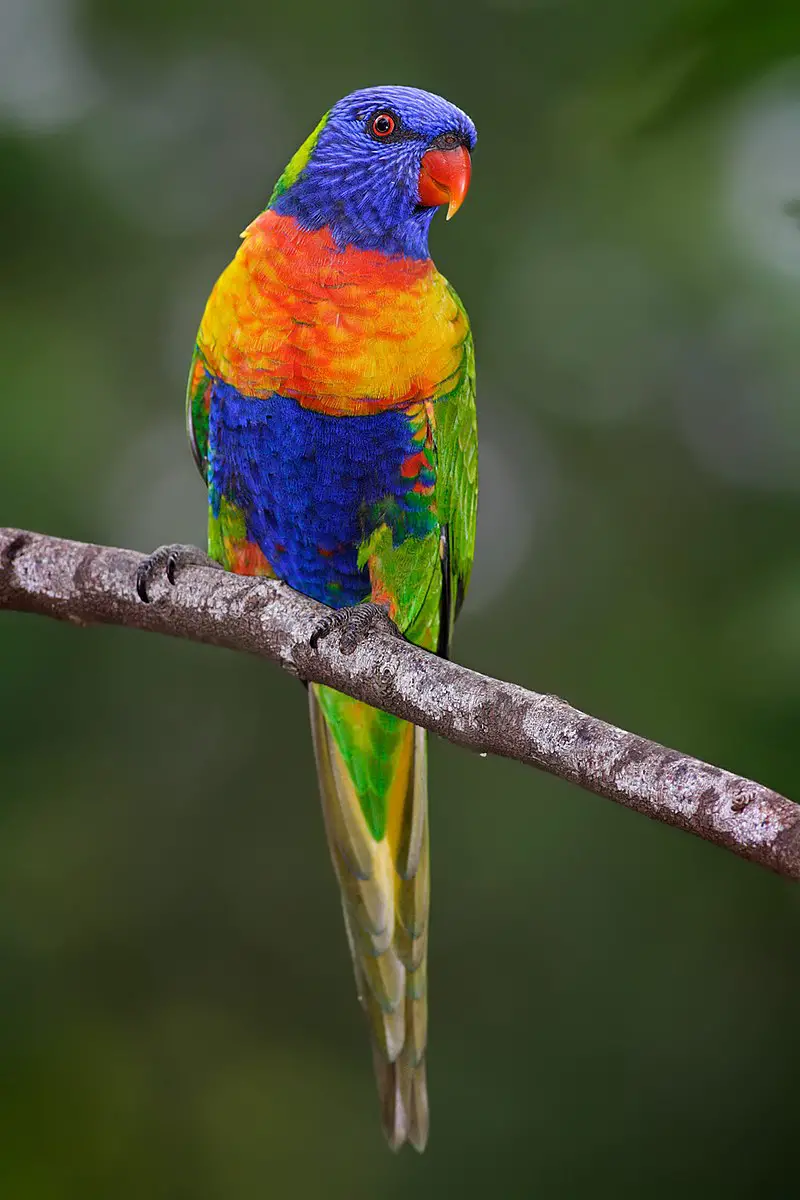
The Rainbow Lorikeet is a brightly coloured parrot native to Australia. It inhabits rainforests, coastal bushlands and woodland areas along the eastern seaboard from northern Queensland to South Australia.
These birds have an unmistakable bright rainbow plumage of blue, red and yellow feathers which make them easy to recognise in their natural environment.
They are also known for their distinctive call – often described as sounding like ‘kikiki-kyu’.
Six related species were once considered subspecies of the Rainbow Lorikeet but these days they are recognised separately due to differences in size, colouration and behaviour.
Despite being introduced elsewhere such as New Zealand, Hawaii or California they remain largely confined within their original range in Australia – where they can be seen soaring through the air or drinking nectar from flowers with its long tongue.Scientific classification:
| Kingdom | Animalia |
| Phylum | Chordata |
| Class | Aves |
| Order | Psittaciformes |
| Family | Psittaculidae |
| Genus | Trichoglossus |
| Species | T. moluccanus |
Also Featured In: Aviary Birds You Should Know,
7. Galah
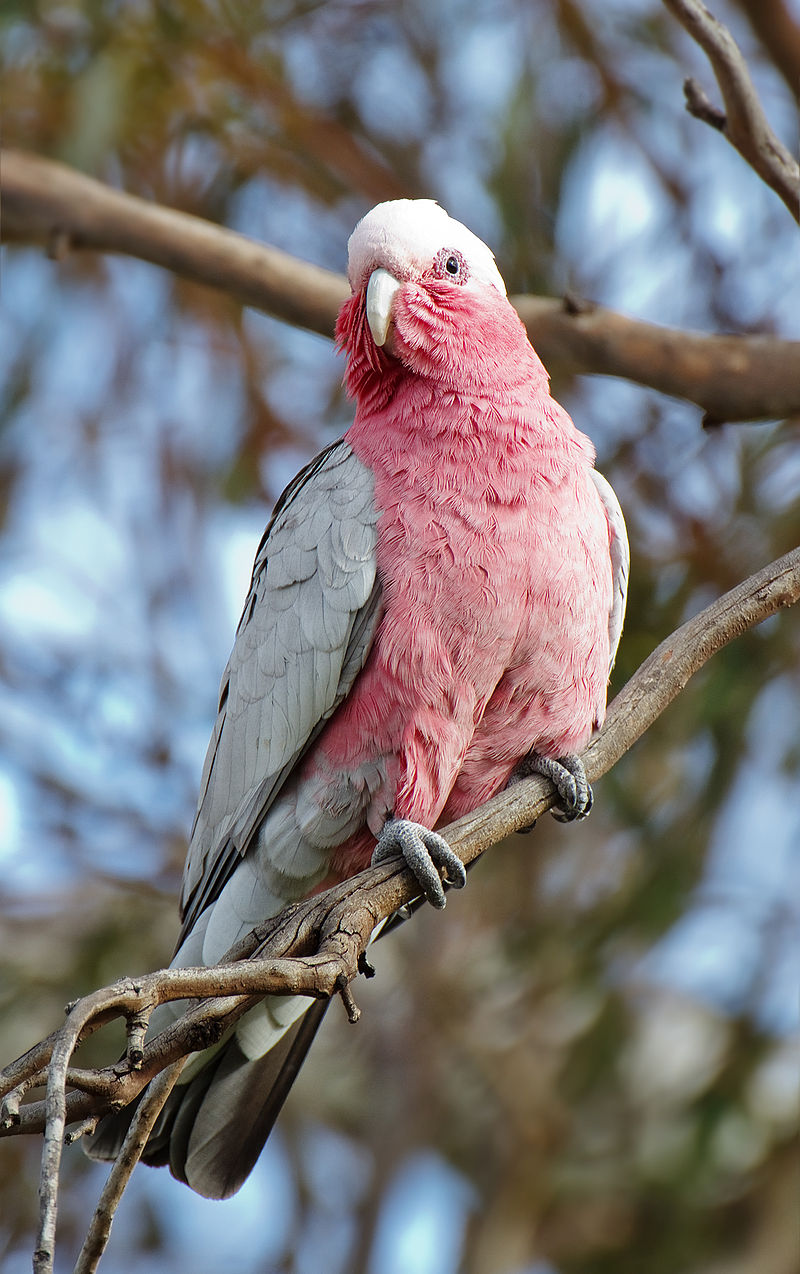
The Galah is a striking bird, easily identified by its distinctive pink and grey plumage. It belongs to the cockatoo family and is found throughout Australia.
With its loud call, it’s not hard to spot this vibrant bird in both rural and urban settings. They are also known as rose-breasted cockatoos due to their bright feathers on their chest.
These birds form strong relationships with each other, living together in pairs or small groups while they look for food among grasslands or open woodlands.
Their diet consists of seeds, fruits, buds & flowers making them valuable contributors to ecosystems across the country.Scientific classification:
| Kingdom | Animalia |
| Phylum | Chordata |
| Class | Aves |
| Order | Psittaciformes |
| Family | Cacatuidae |
| Genus | Eolophus Bonaparte, 1854 |
| Species | E. roseicapilla |
8. Australian King Parrot
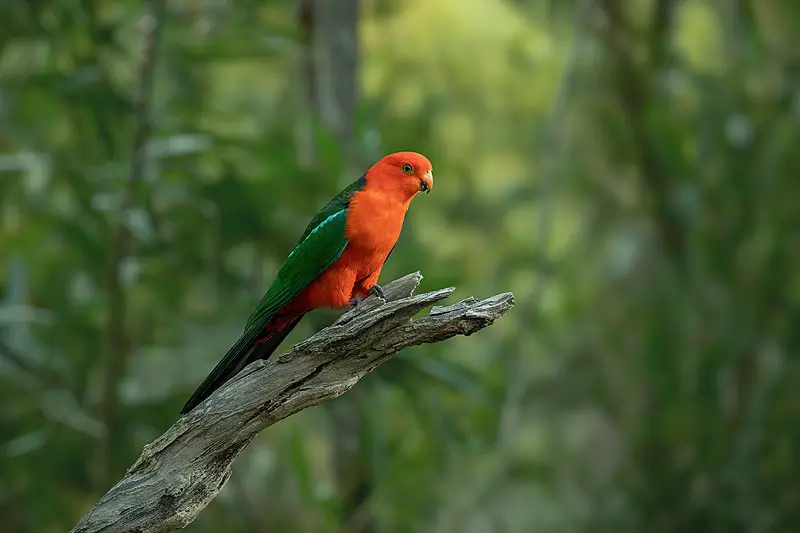
The Australian king parrot is a colourful bird endemic to eastern Australia. It lives in humid, heavily forested areas of the continent including eucalyptus woodlands and subtropical and temperate rainforest.
The King Parrot has an unmistakable green back with red underparts for males, females show more muted colours but still have a bright red belly.
These birds feed on fruits and seeds gathered from trees or shrubs such as Eucalyptus, Acacia or Lillipilli.
They are also commonly seen scavenging for food near roadsides where people often leave scraps behind – so it pays to be careful if you’re driving through any areas they inhabit.
Despite their small size these birds are quite vocal making them easily noticed by both humans and other wildlife alike.Scientific classification:
| Kingdom | Animalia |
| Phylum | Chordata |
| Class | Aves |
| Order | Psittaciformes |
| Family | Psittaculidae |
| Genus | Alisterus |
| Species | A. scapularis |
9. Sulphur-Crested Cockatoo
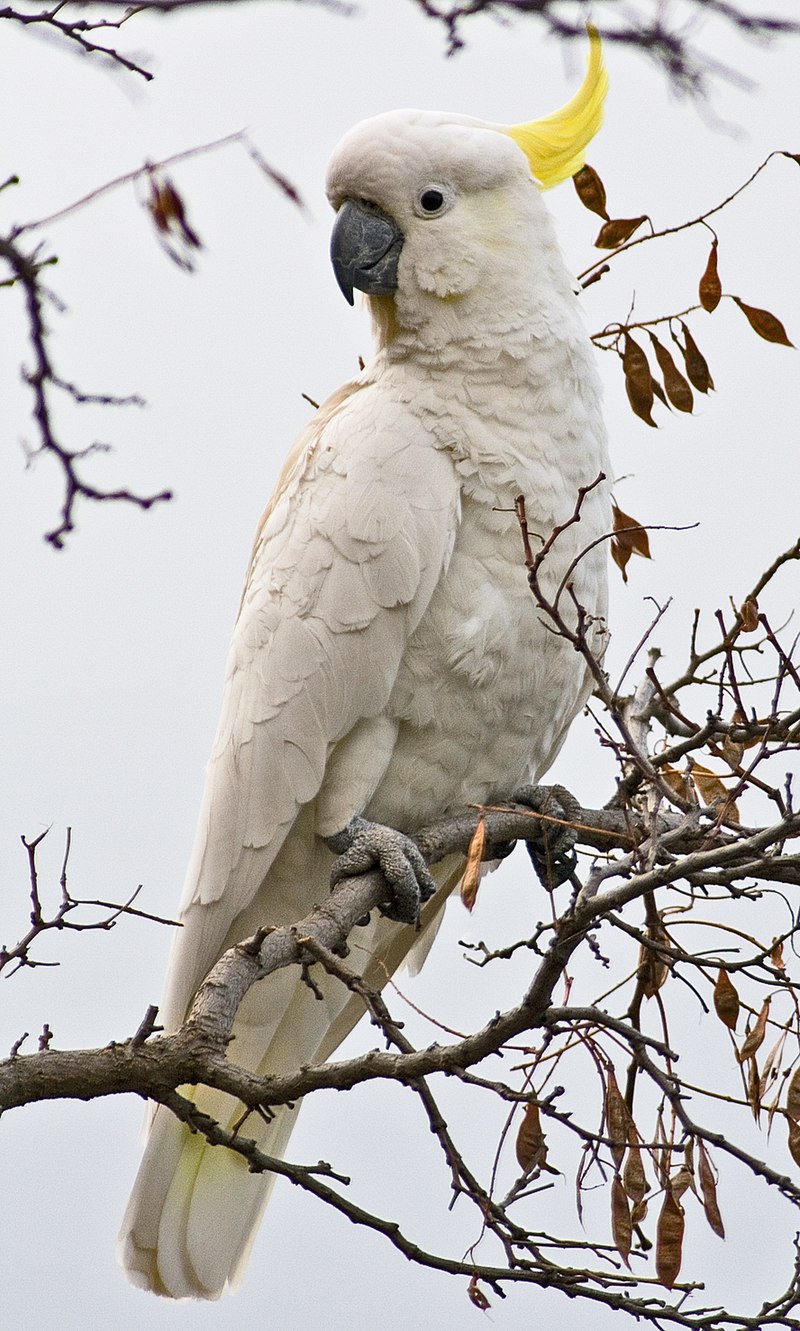
The Sulphur-crested Cockatoo (Cacatua galerita) is a white, relatively large cockatoo native to Australia, New Guinea and some of the islands in Indonesia.
They are highly intelligent birds with distinctive yellow crests on their heads.
These beautiful creatures can be found living in wooded habitats where they often form large flocks that sometimes cause problems as they become pests.
In aviculture, these parrots are very popular due to their intelligence and lively nature but it should be noted that they require an experienced birdkeeper or owner to properly take care of them since they can also be quite demanding pets at times.
All in all though, the Sulphur-crested Cockatoos remain one of the most beloved species among bird enthusiasts around the world.Scientific classification:
| Kingdom | Animalia |
| Phylum | Chordata |
| Class | Aves |
| Order | Psittaciformes |
| Family | Cacatuidae |
| Genus | Cacatua |
| Subgenus | Cacatua |
| Species | C. galerita |
10. Superb Fairywren
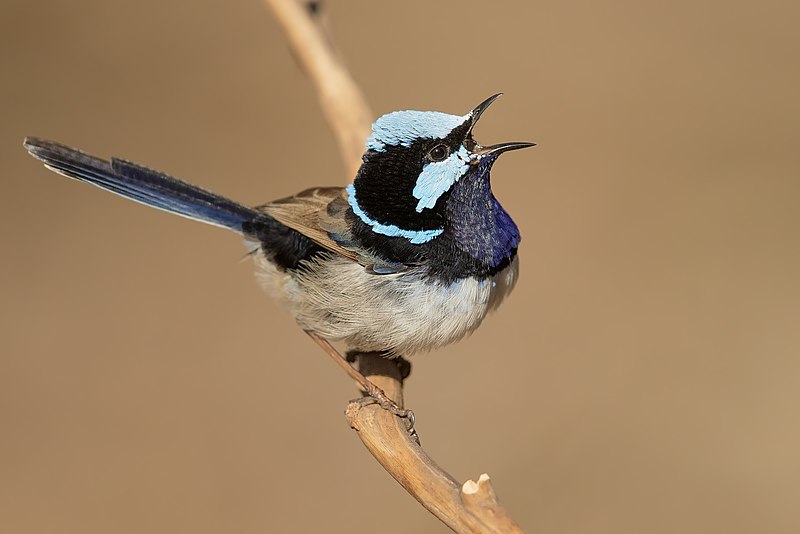
The Superb Fairywren is a beautiful and unique bird native to southeastern Australia.
The male in breeding plumage has an impressive bright blue forehead, ear coverts, mantle and tail with a black mask and either black or dark blue throat.
They are sedentary birds that form strong territorial bonds with their mates; the males staying close-by while the females build nests away from them.
These birds exhibit high sexual dimorphism; making it easy for us to distinguish between males and females of this species.
Their diet consists primarily of insects although they will also feed on other invertebrates as well as nectar, fruit and seeds when available.
This small passerine bird is sure to bring any garden alive with its vibrant colours.Scientific classification:
| Kingdom | Animalia |
| Phylum | Chordata |
| Class | Aves |
| Order | Passeriformes |
| Family | Maluridae |
| Genus | Malurus |
| Species | M. cyaneus |
11. Black Swan
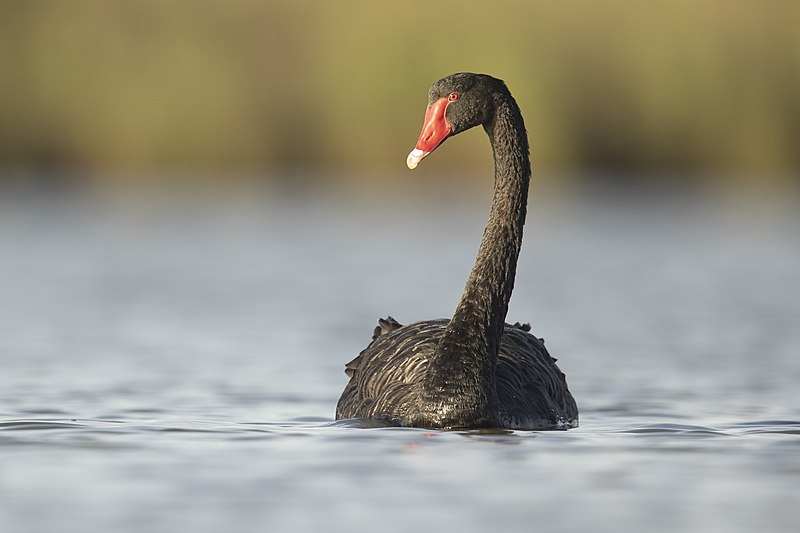
The Black Swan is a beautiful species of swan found in many parts of Australia. It has black plumage and a bright red bill, making it quite distinctive from other birds in the region.
These majestic birds are monogamous and both parents take turns incubating eggs as well as raising cygnets together.
They have an erratic migration pattern that depends on climatic conditions, although they usually move within their native range to find suitable habitats for breeding and feeding purposes.
The Black Swan’s graceful presence adds beauty to any water body they inhabit while also serving as important indicators of environmental health due to their sensitivity towards changes in their habitat quality.Scientific classification:
| Kingdom | Animalia |
| Phylum | Chordata |
| Class | Aves |
| Order | Anseriformes |
| Family | Anatidae |
| Genus | Cygnus |
| Species | C. atratus |
12. Crested Pigeon
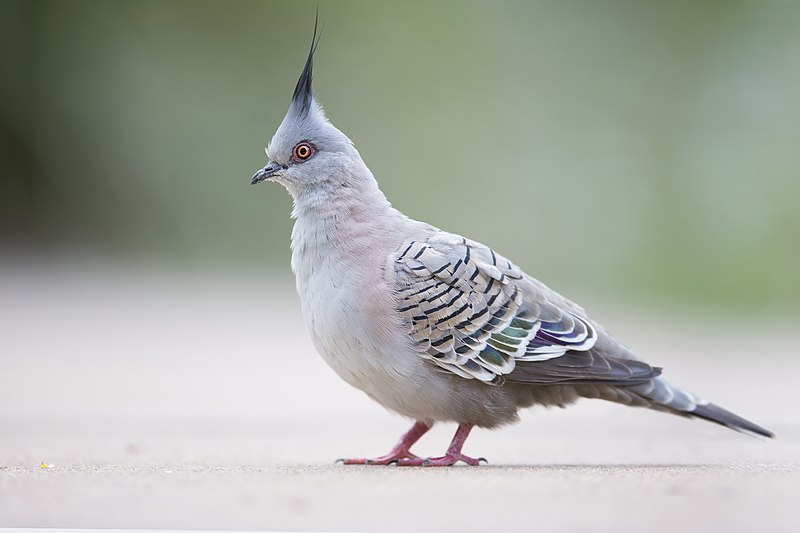
The Crested Pigeon is a medium-sized bird found widely across mainland Australia. It stands out from other pigeons due to its unique erect crest on the top of its head, which gives it an unmistakable look.
The body of this pigeon is slate grey in color with lighter gray undersides and chestnut colored wings that have white tips when they are open while flying.
Its striking black tipped yellow beak and pale blue eye ring add further interest to this beautiful species.
When alarmed, these birds will make loud clapping sounds by bringing their wings together above their backs as part of their defensive behavior.Scientific classification:
| Kingdom | Animalia |
| Phylum | Chordata |
| Class | Aves |
| Order | Columbiformes |
| Family | Columbidae |
| Genus | Ocyphaps G.R. Gray, 1842 |
| Species | O. lophotes |
Also Featured In: Most Common Birds in Oceania,
13. Australian Pelican
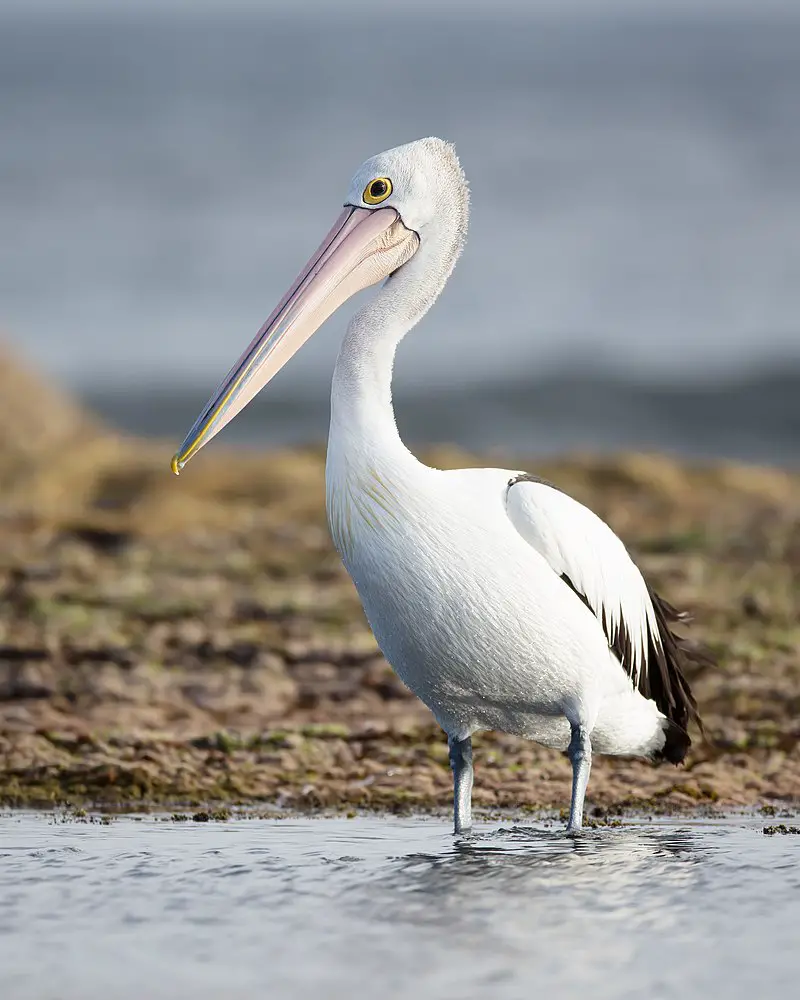
The Australian pelican is a majestic large waterbird with predominantly white plumage and black wings.
It has the longest bill of any living bird, which it uses to fish for its main source of food in both inland and coastal waters of Australia, New Guinea, Fiji, parts of Indonesia and as a vagrant in New Zealand.
They usually feed together by forming lines or circles around their prey before dipping down into the water at once.
In addition to fishing they also scavenge on other sources such as eggs from nesting seabirds or carrion.
Their unique appearance makes them an iconic species that can be easily recognised across many areas throughout Australasia making them popular amongst tourists who come to see them up close.Scientific classification:
| Kingdom | Animalia |
| Phylum | Chordata |
| Class | Aves |
| Order | Pelecaniformes |
| Family | Pelecanidae |
| Genus | Pelecanus |
| Species | P. conspicillatus |
14. Noisy Miner
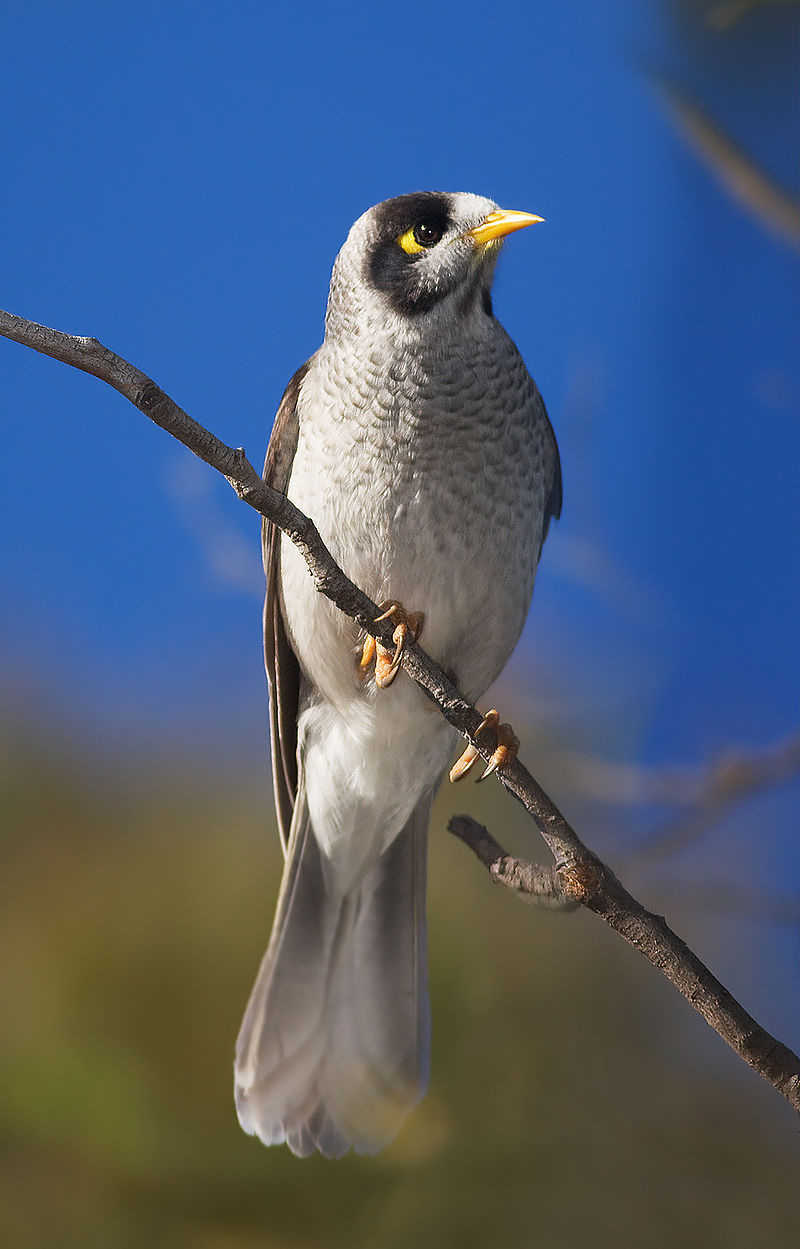
The Noisy Miner is a beautiful bird native to eastern and southeastern Australia. It has a grey body, black head, orange-yellow beak and feet, with an eye patch that ranges from yellow to more intense in Tasmanian birds.
The tail feathers are distinguished by white tips which provide it with its signature look. These miners have the ability to produce loud calls when communicating or defending their territory – hence their name.
They mainly feed on fruit but also insects, nectar and small lizards found around gardens.
As they are quite common in urban areas of Australia, these birds make for some delightful avian visitors.Scientific classification:
| Kingdom | Animalia |
| Phylum | Chordata |
| Class | Aves |
| Order | Passeriformes |
| Family | Meliphagidae |
| Genus | Manorina |
| Species | M. melanocephala |
15. Rosellas
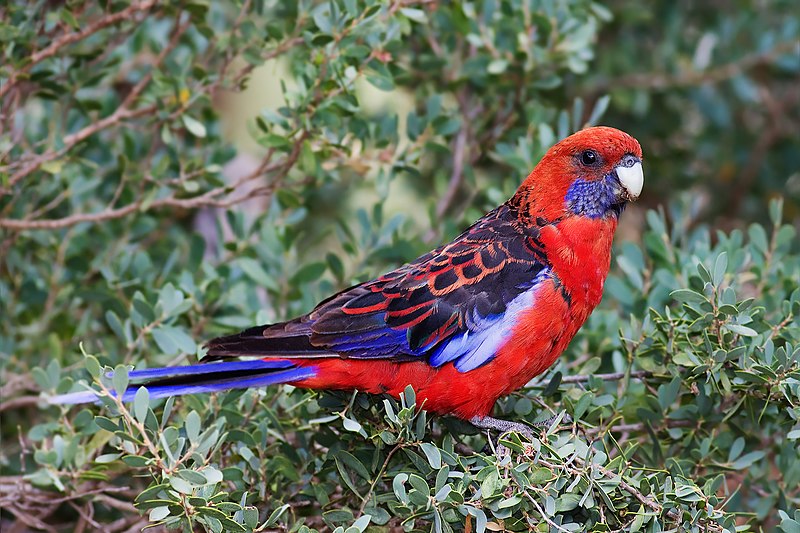
Rosellas are beautiful, colorful parrots native to Australia that belong to the genus Platycercus. They have broad tails and a diet consisting mainly of seeds and fruit.
There are six species with 19 subspecies in total. Their bright plumage is one of their most distinctive features, making them popular among bird enthusiasts around the world.
Rosellas can be seen perched on tree branches or flying freely through woodlands across much of Australia’s eastern coast as well as Tasmania’s south-western regions.
Many people enjoy having rosellas as pets due to their attractive colors and lively personalities.Scientific classification:
| Kingdom | Animalia |
| Phylum | Chordata |
| Class | Aves |
| Order | Psittaciformes |
| Family | Psittaculidae |
| Tribe | Platycercini |
| Genus | Platycercus Vigors, 1825 |
Also Featured In: Red Birds that Found in the United States America,
16. New Holland Honeyeater
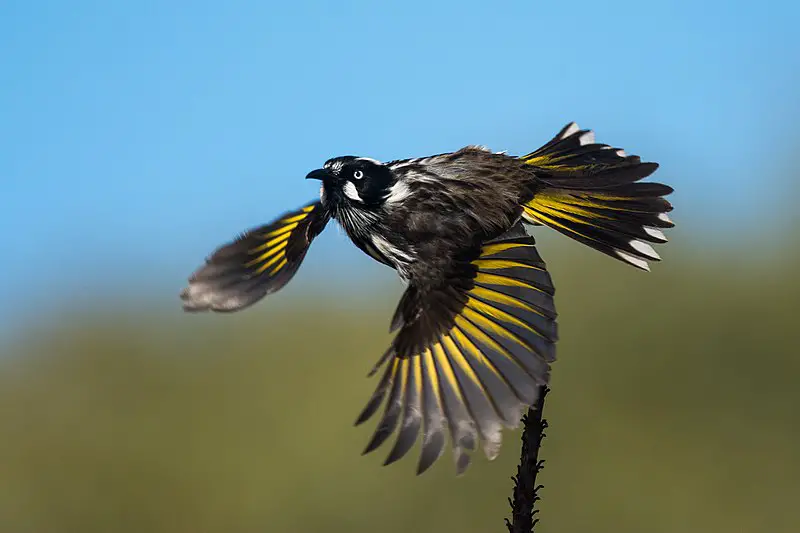
The New Holland honeyeater is a distinctive bird found in southern Australia. It has five subspecies and measures 18 cm long, with mainly black feathers contrasting against its white eyes.
This species was among the first to be scientifically described in Australia, known as Certhia novaehollandiae at that time.
These birds are very active and can often be seen searching for food or bathing on hot days near water sources such as streams or lakes.
They have an impressive range of vocalizations which they use to communicate with each other when looking for mates or defending their territories from intruders.
The New Holland Honeyeaters feed primarily on nectar but also consume insects, lizards, spiders and seeds when available throughout the year – making them essential pollinators within Australian ecosystems.Scientific classification:
| Kingdom | Animalia |
| Phylum | Chordata |
| Class | Aves |
| Order | Passeriformes |
| Family | Meliphagidae |
| Genus | Phylidonyris |
| Species | P. novaehollandiae |
17. Pelican
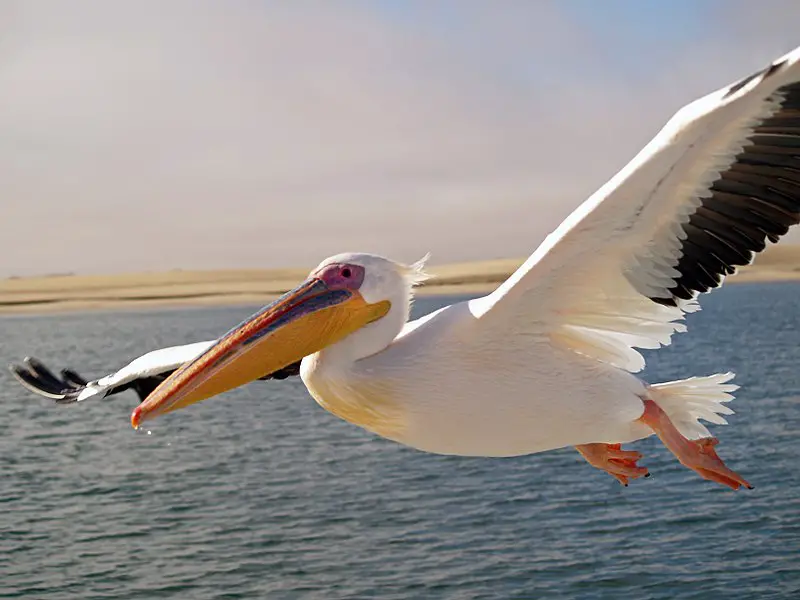
Pelicans are a large water bird and form part of the family Pelecanidae. They have long beaks, allowing them to scoop up prey from both land and sea with ease.
Their most distinctive feature is their huge throat pouch which they use to drain water before swallowing their food.
Most pelican species have predominantly pale plumage however exceptions such as the brown and Peruvian pelicans exhibit darker colouring.
The bill, face skin and pouch of all Pelican species become brightly coloured during breeding season in order to attract mates.
Pelicans can often live up to 25 years due to the fact that they eat mostly fish which provides them with enough nutrients for longevity.Scientific classification:
| Kingdom | Animalia |
| Phylum | Chordata |
| Class | Aves |
| Order | Pelecaniformes |
| Family | Pelecanidae |
| Genus | Pelecanus Linnaeus, 1758 |
Also Featured In: Birds You’ll Find in the Sea, Famous Paintings Birds
18. Crimson Rosella
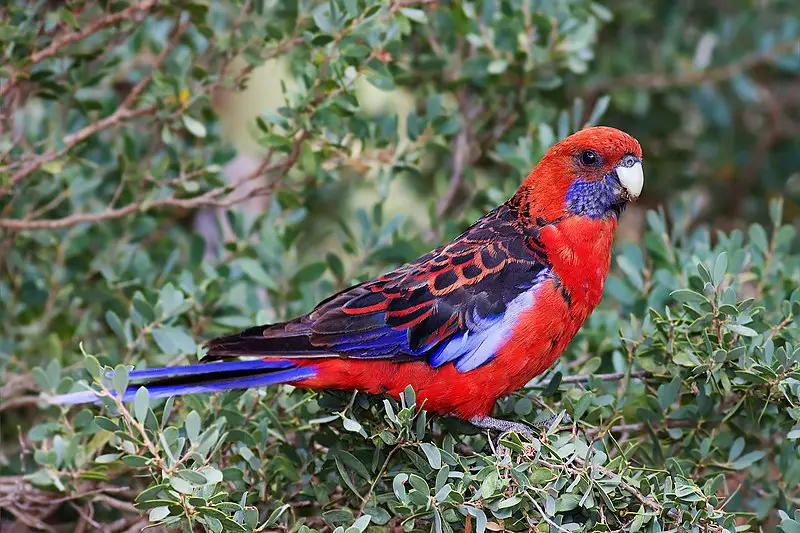
The Crimson Rosella is a beautiful parrot native to eastern and south eastern Australia which has been introduced to New Zealand and Norfolk Island.
It lives in mountain forests, gardens, woodlands or other open habitats such as farmland with trees.
This species was created when two separate species- the Yellow Rosella and Adelaide Rosella were combined together due to molecular studies showing them being closely related.
The Crimson Rosellas have bright red feathers on their wings and back with blue cheeks, forehead & tail while its underbelly is yellowish orange in colour.
They also have black bars across each wing & white patches near their tails making them an attractive sight for bird watchers.Scientific classification:
| Kingdom | Animalia |
| Phylum | Chordata |
| Class | Aves |
| Order | Psittaciformes |
| Family | Psittaculidae |
| Genus | Platycercus |
| Species | P. elegans |
19. Masked Lapwing
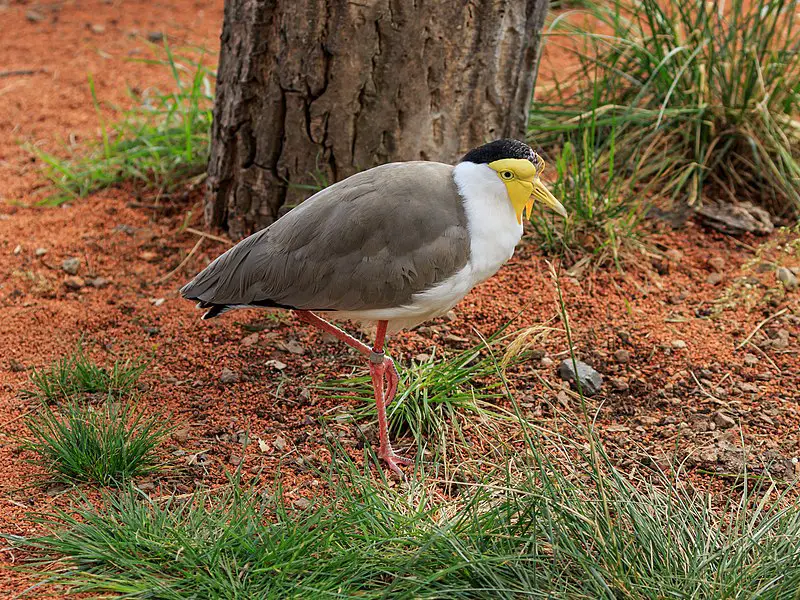
The Masked Lapwing is a large, distinctive bird that can be found in Australia, New Zealand and parts of Papua New Guinea.
It spends most of its time on the ground searching for food such as insects and worms, making it an important part of the local ecology.
It has several loud calls that are easily recognisable – from its ‘kwee-ep’ alarm call to its territorial ‘chi-wick’ call.
The Masked Lapwing is particularly known for swooping down when disturbed or threatened; however this behaviour serves to protect their nests with chicks during breeding season.
They inhabit open fields and grasslands which makes them easy to see if you’re lucky enough.Scientific classification:
| Kingdom | Animalia |
| Phylum | Chordata |
| Class | Aves |
| Order | Charadriiformes |
| Family | Charadriidae |
| Genus | Vanellus |
| Species | V. miles |
20. Dusky Moorhen
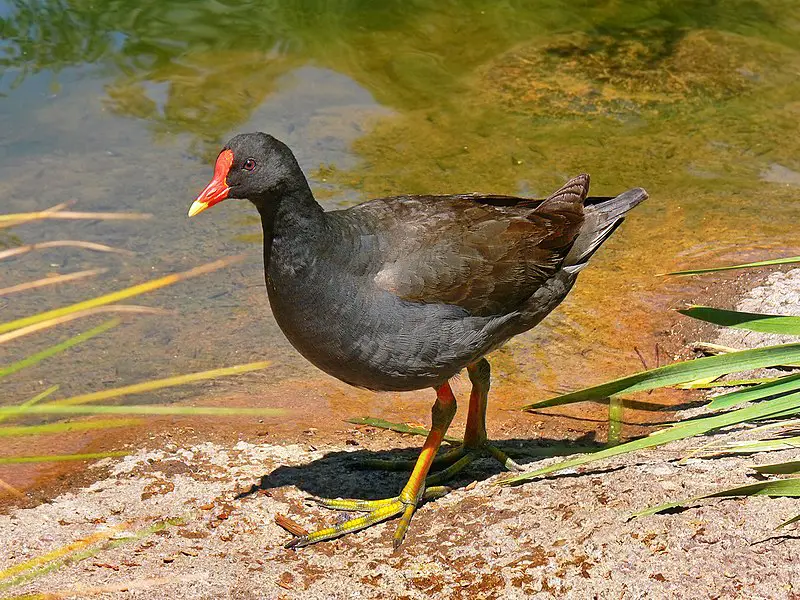
The dusky moorhen is a species of bird found in India, Australia, New Guinea, Borneo and Indonesia. It has dark plumage with an iridescent green sheen on its back and wings.
Its beak and legs are yellow-orange in color. The tail is long and pointed. Dusky moorhens live around freshwater wetlands such as swamps or ponds where they feed largely on aquatic vegetation but may also eat small insects or fish if available.
They often live alongside other birds from the same genus like purple swamphens or Eurasian coots which have similar appearances but different habitats preferences than their own species’.
Although timid when approached by humans these birds still make fascinating subjects for observation due to their unique behaviors within family groups that can help us understand more about them.Scientific classification:
| Kingdom | Animalia |
| Phylum | Chordata |
| Class | Aves |
| Order | Gruiformes |
| Family | Rallidae |
| Genus | Gallinula |
| Species | G. tenebrosa |
Also Featured In: Timor-Leste birds, Common Townsville Birds
21. White-Faced Heron
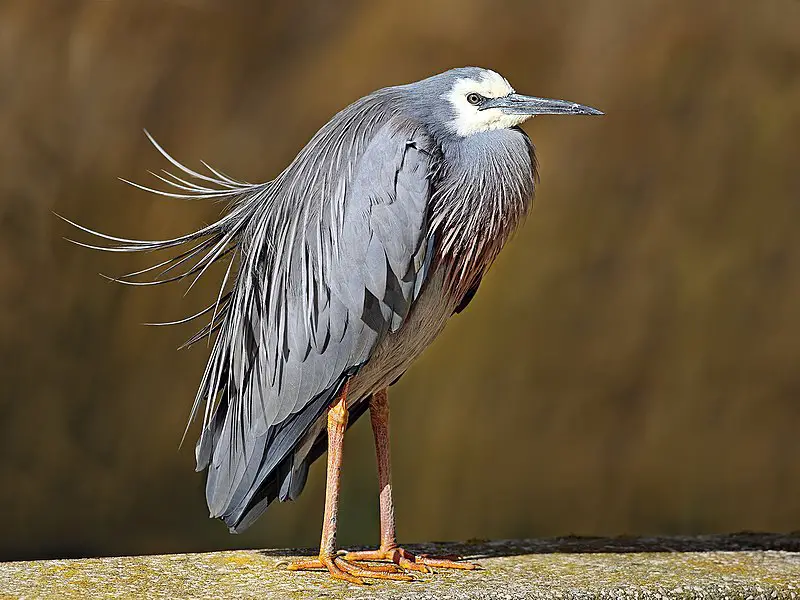
The White-faced Heron is a common sight throughout much of Australasia. With its pale, bluish grey feathers and yellow legs this bird stands out in the crowd.
It can be found on New Guinea, Torres Strait Islands and Indonesia as well as Australia and New Zealand but tends to avoid dry areas. This medium sized heron has one distinct feature – a white face.
Its diet consists mainly of small fish, lizards, frogs insects and crustaceans which it hunts for by wading into shallow water or searching through grasses near wetlands.
In flight they appear graceful with their long neck tucked back against their body giving them an elegant silhouette against the sky.
Their behaviour shows intelligence when finding food sources or evading predators making them interesting creatures to observe in nature.Scientific classification:
| Kingdom | Animalia |
| Phylum | Chordata |
| Class | Aves |
| Order | Pelecaniformes |
| Family | Ardeidae |
| Genus | Egretta |
| Species | E. novaehollandiae |
Also Featured In: Christmas Island Birds, Birds that Live around Brisbane
22. Silver Gull

The Silver Gull is a common sight in Australia, especially along the coastlines. It’s smaller than the Pacific Gull and has silver-grey wings with white head and underparts.
Its scientific name is Chroicocephalus novaehollandiae, but it shouldn’t be confused with the Herring Gull which is also called “Silver Gull” in many other languages (Larus argentatus).
During summer months these birds can often be seen around fishing boats scavenging for discarded food or flying low over city parks looking for handouts from humans.
They are highly adaptable to their environment making them quite successful at coexisting near human populations.
These Australian seabirds have been known to live up to 25 years old.Scientific classification:
| Kingdom | Animalia |
| Phylum | Chordata |
| Class | Aves |
| Order | Charadriiformes |
| Family | Laridae |
| Genus | Chroicocephalus |
| Species | C. novaehollandiae |
Also Featured In: Gulls Species, Silver Birds You Should Know
23. Sacred Kingfisher
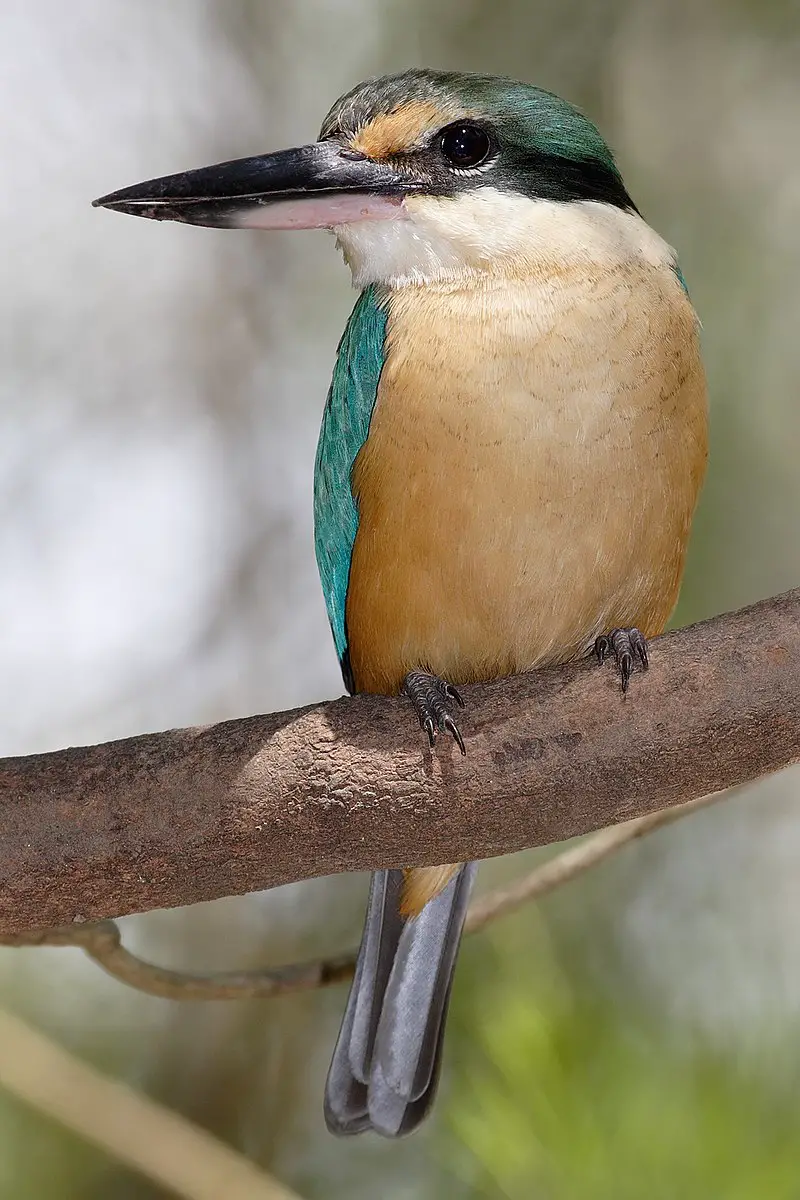
The Sacred Kingfisher is a medium-sized bird found throughout Australia, New Zealand and the western Pacific. It inhabits mangroves, woodlands, forests and river valleys.
Its binomial name Halcyon sanctus was introduced by Nicholas Aylward Vigors and Thomas Horsfield in 1827 when they described an Australian specimen of this species.
The kingfisher has bright blue feathers on its back with striking orange or red underparts depending on their geographical location.
They feed mainly off fish but will also take crustaceans as well as other small aquatic prey like insects.
When breeding season arises these magnificent birds build elaborate nests out of mud pellets inside hollows near water sources making them one of the most unique avian creatures around.Scientific classification:
| Kingdom | Animalia |
| Phylum | Chordata |
| Class | Aves |
| Order | Coraciiformes |
| Family | Alcedinidae |
| Subfamily | Halcyoninae |
| Genus | Todiramphus |
| Species | T. sanctus |
Also Featured In: Kingfishers Species, Queensland Birds You Should Know
24. Yellow-Tailed Black Cockatoo
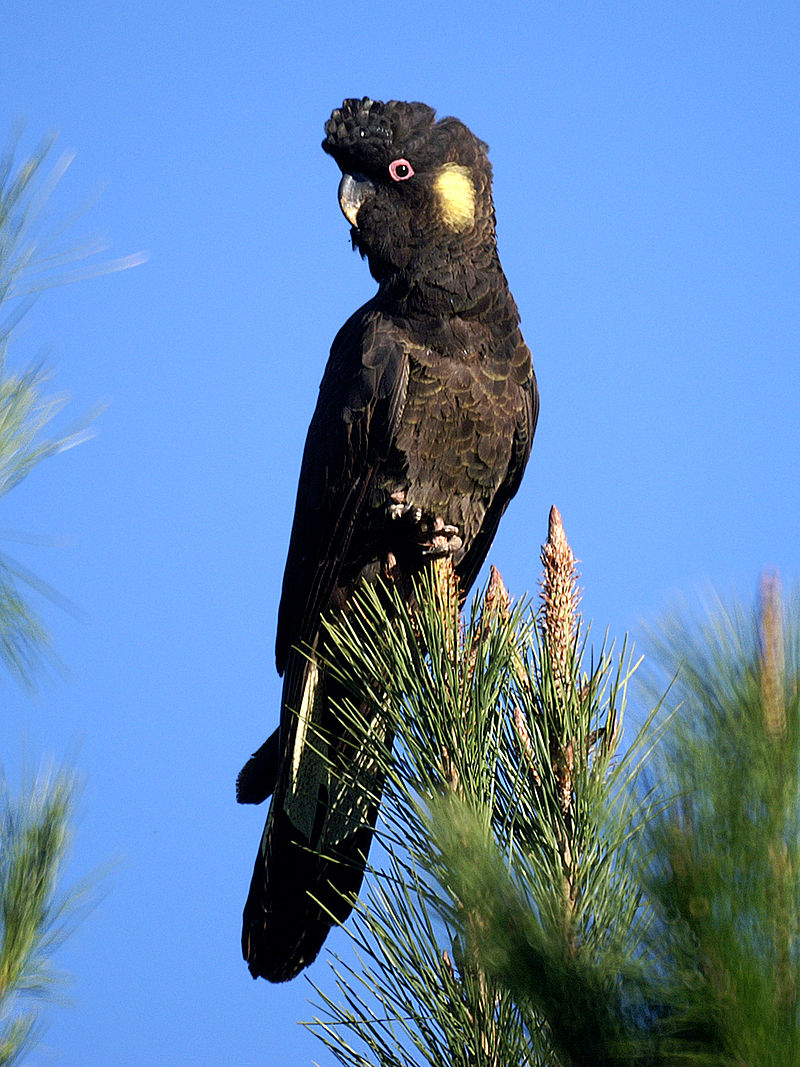
The Yellow-tailed Black Cockatoo is a beautiful bird native to Australia. It measures 55–65 cm in length and has an unmistakable look with its brownish black plumage, yellow cheek patches, short crest on the top of its head and prominent yellow tail band.
The feathers are also edged with yellow giving it a unique scalloped appearance. Males have a striking black beak while females have pink beaks with grey tips – making them easy to tell apart at first glance.
They prefer woodlands but can sometimes also be seen near urban areas as well as open grassy woodlands or forests where they feed on seeds from eucalypts, acacias and banksias among other plants.
They make loud screeching noises when flying which makes them easily identifiable even from afar.Scientific classification:
| Kingdom | Animalia |
| Phylum | Chordata |
| Class | Aves |
| Order | Psittaciformes |
| Family | Cacatuidae |
| Genus | Zanda |
| Species | Z. funerea |
Also Featured In: Parrots Species, Birds that Live around Victoria
25. Australian Pied Cormorant
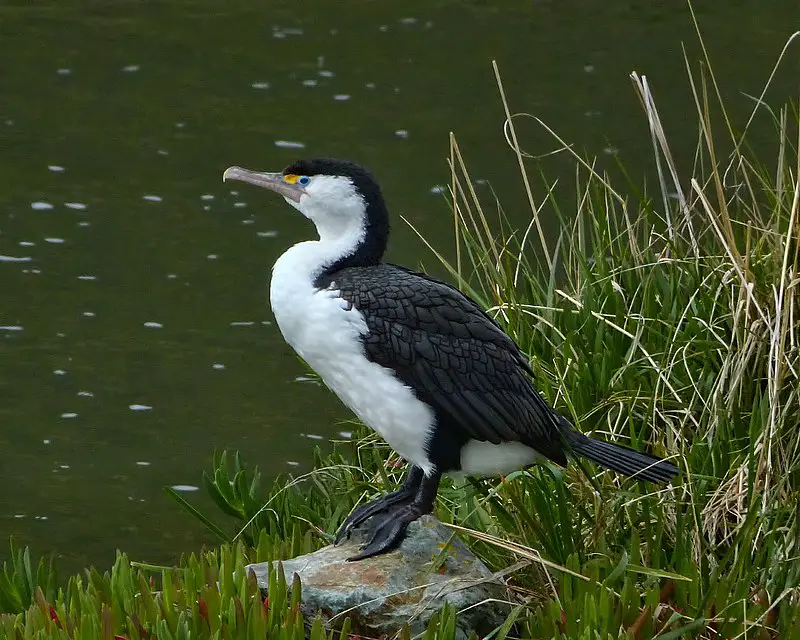
The Australian pied cormorant is a medium-sized member of the cormorant family and can be found around the coasts of Australasia.
It’s distinctive plumage features black feathers on its head, back, wings and tail with some white patches in between.
Its face has yellow skin that becomes bright orange when breeding season begins. The bird uses it’s webbed feet to swim through water searching for food such as fish or small crustaceans which make up most of their diet.
They often hunt by diving underwater from where they can stay submerged for about 30 seconds before resurfacing again for air.
During these dives they are able to travel depths up to 15 meters down.
This species also forms colonies when mating season comes around and will nest together in tall trees near shorelines or other bodies of water so that fishing is easier within reach during this time period every year.Scientific classification:
| Kingdom | Animalia |
| Phylum | Chordata |
| Class | Aves |
| Order | Suliformes |
| Family | Phalacrocoracidae |
| Genus | Phalacrocorax |
| Species | P. varius |
Also Featured In: Cormorant Species, Common Melbourne Birds
26. Little Black Cormorant
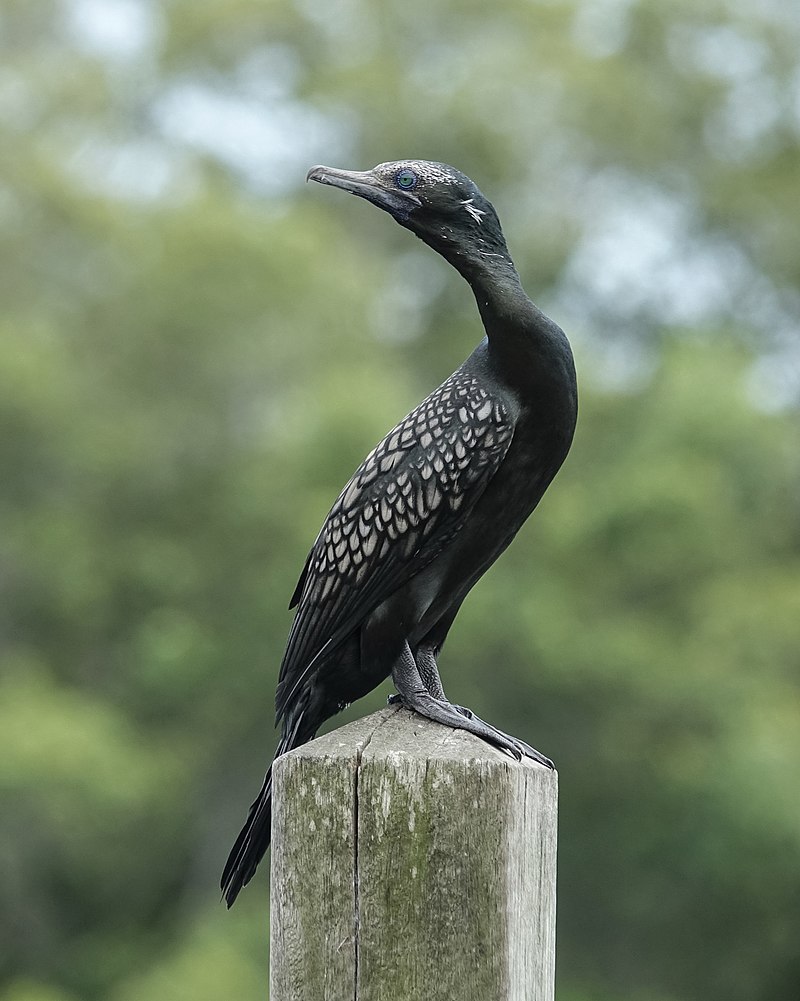
The little black cormorant is a small seabird of the cormorant family that is commonly found in rivers, lakes and coastal areas throughout Australia and New Zealand.
It has an all-black colouring with blue-green eyes and grows to about sixty centimetres long. This species was formally described by German ornithologist Johann Jakob Kaup in 1837 as Phalacrocorax sulcirostris.
The little black cormorant feeds on insects, fish and crustaceans which it captures underwater, diving up to two metres deep for around twenty seconds at a time.
They are known for their large breeding colonies where they build nests out of twigs or seaweed near water bodies like sandbanks or rocky cliffsides.
Little black cormorants can also be seen perching atop rocks drying off after swimming or preening themselves while perched low over the water’s surface.Scientific classification:
| Kingdom | Animalia |
| Phylum | Chordata |
| Class | Aves |
| Order | Suliformes |
| Family | Phalacrocoracidae |
| Genus | Phalacrocorax |
| Species | P. sulcirostris |
Also Featured In: South Australian Birds, Native Birds Of Mackay
27. Australasian Darter
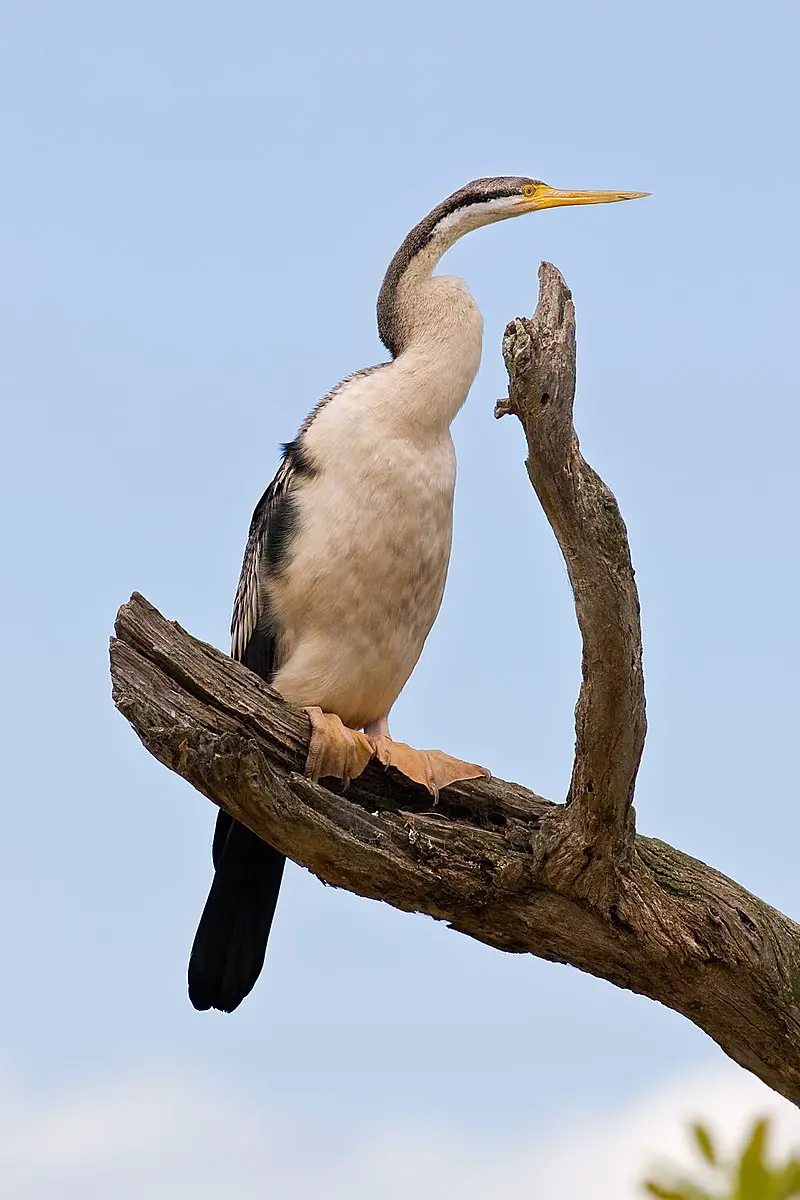
The Australasian Darter, also known as the Australian Darter, is a species of bird in the darter family. It can be found across Australia, Indonesia and Papua New Guinea.
This large bird has an impressive wingspan between 86-94 cm and weighs up to 2.6 kgs.
First discovered by John Gould in 1847, this long necked creature loves to swim and hunt for food underwater before drying its feathers on tree branches or rocks afterwards – like other Anhingidae species do.
They mainly feed on fish but will eat crustaceans too if they are around. With beautiful black plumage with white markings on their wings and tail these birds stand out from most others due to their unique style when it comes to fishing.Scientific classification:
| Kingdom | Animalia |
| Phylum | Chordata |
| Class | Aves |
| Order | Suliformes |
| Family | Anhingidae |
| Genus | Anhinga |
| Species | A. novaehollandiae |
Also Featured In: Birds that Found in Kakadu National Park, Birds that You’ll find in Perth
28. Welcome Swallow
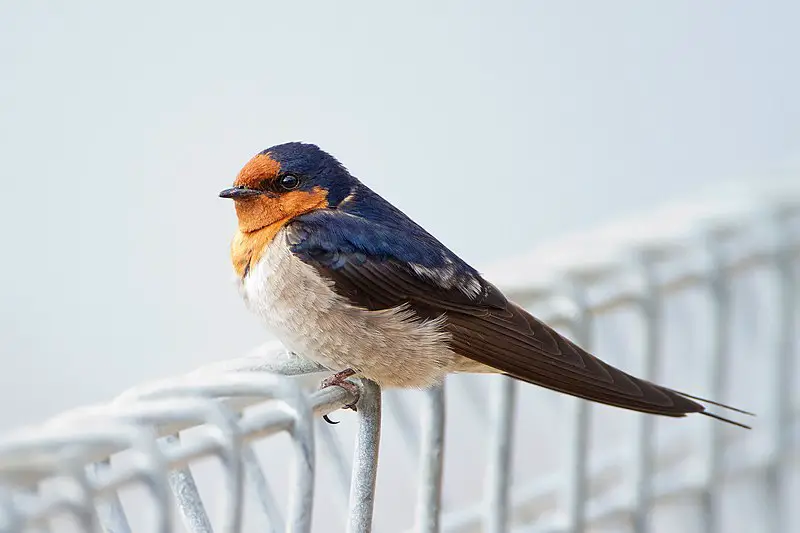
The Welcome Swallow (Hirundo neoxena) is a small passerine bird in the swallow family, native to Australia and nearby islands.
It was self-introduced into New Zealand in the mid twentieth century and is often considered conspecific with the Pacific swallow.
This species breeds mainly throughout southern and eastern Australia across various habitats such as woodlands, open countrysides, grasslands, marshes and coastal areas.
They are most commonly seen near human settlements like farmhouses or parks where they build their distinctive mud nests under eaves of buildings or on bridges.
The adults have steel-blue upperparts with pale rufous undersides while their throat has white stripes that extend down onto its breast feathers giving it a very attractive look.Scientific classification:
| Kingdom | Animalia |
| Phylum | Chordata |
| Class | Aves |
| Order | Passeriformes |
| Family | Hirundinidae |
| Genus | Hirundo |
| Species | H. neoxena |
Also Featured In: Swallows Species, Birds of Tasmania
29. Long-Billed Corella
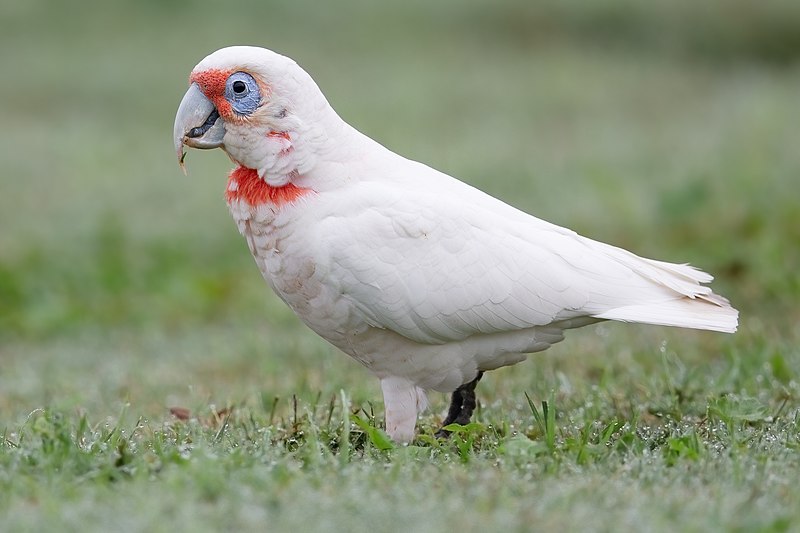
The Long-billed Corella is a breathtakingly beautiful cockatoo native to Australia. It has an elegant white feathering with reddish hues on the face and forehead, breast, and belly.
Its most defining feature is its long beak which is pale in colour and used for digging up roots and seeds from the ground.
These birds are highly social creatures that live together in large flocks of up to 400 individuals.
They can often be seen flying around as they migrate seasonally between different areas of Australia throughout their lives.
The Long-billed Corella makes a great pet if you’re willing to put in the time since it requires lots of interaction with people or other animals otherwise they may become bored or depressed very quickly.
All this considered, these amazing birds make excellent companions once properly cared for.Scientific classification:
| Kingdom | Animalia |
| Phylum | Chordata |
| Class | Aves |
| Order | Psittaciformes |
| Family | Cacatuidae |
| Genus | Cacatua |
| Subgenus | Licmetis |
| Species | C. tenuirostris |
Also Featured In: birds of pink,
30. Grey Teal
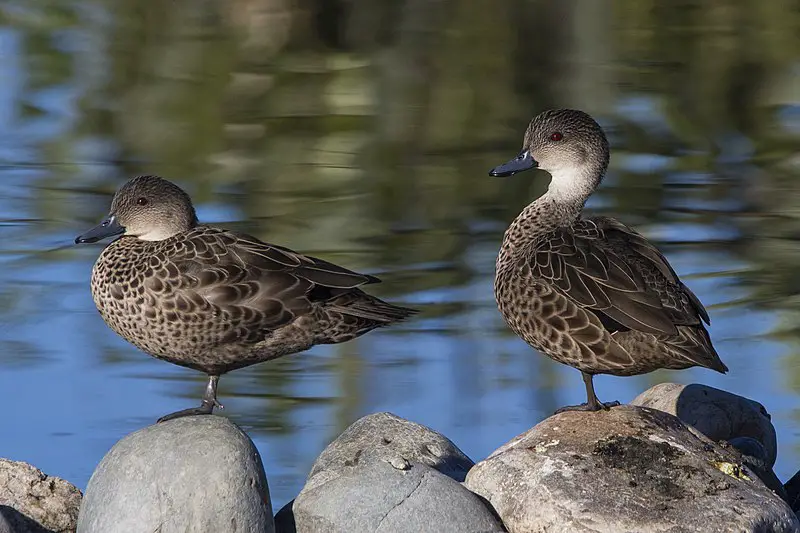
The Grey Teal is a beautiful dabbling duck native to Australia and New Zealand. It can be identified by its mottled brown feathers, white and green flashes on the wings and most noticeably, an adult male’s crimson coloured iris in its eyes.
Males and females share the same colouration unlike other ducks of similar species which have different feather patterns between sexes.
The Grey Teal prefers open wetlands for habitat where it feeds mainly on aquatic plants but also small crustaceans or insects as part of their diet.
They are usually found in family groups with one female accompanied by several males during breeding season when courtship begins until nesting occurs around May-June time frame each year depending upon location.Scientific classification:
| Kingdom | Animalia |
| Phylum | Chordata |
| Class | Aves |
| Order | Anseriformes |
| Family | Anatidae |
| Genus | Anas |
| Species | A. gracilis |
Also Featured In: birds of teal,
31. Chestnut Teal
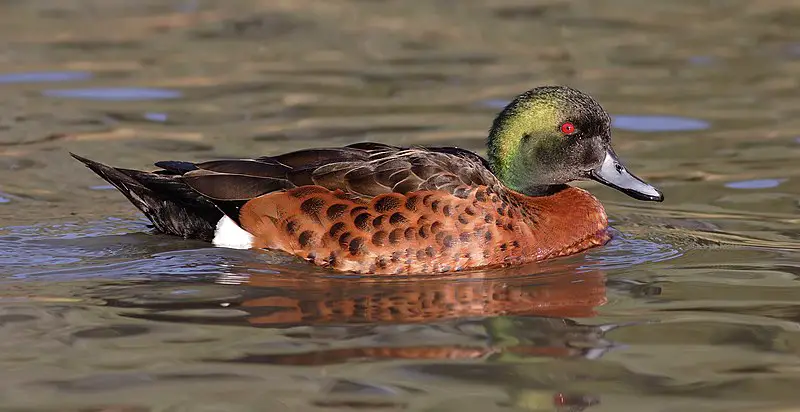
The Chestnut Teal is a dabbling duck found in Australia, protected under the National Parks and Wildlife Act of 1974.
It was first described by naturalist Thomas Campbell Eyton in 1838 with the binomial name Mareca castanea due to its chestnut-brown colouration.
This species typically inhabits wetlands such as lakes, rivers and swamps where they feed on aquatic invertebrates like mollusks and crustaceans.
They have an unmistakable appearance; their heads are greenish blue while their bodies show off hues of iridescent purple or violet that shimmer when exposed to light.
The males also feature white bars across each wing with black barring along the back edge which contrast against its reddish brown tail feathers.
These majestic creatures make for beautiful sight wherever they go.Scientific classification:
| Kingdom | Animalia |
| Phylum | Chordata |
| Class | Aves |
| Order | Anseriformes |
| Family | Anatidae |
| Genus | Anas |
| Species | A. castanea |
Also Featured In: New South Wales Birds You Need to See, Common Flinders Island Birds
32. Pied Currawong
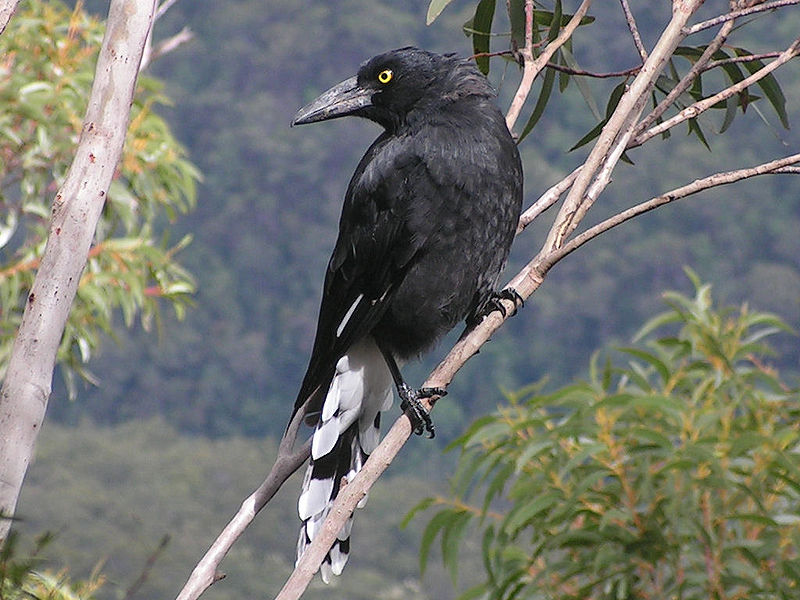
The Pied currawong is a black passerine bird found in eastern Australia and Lord Howe Island. It is closely related to the butcherbirds and Australian magpie.
This crow-like bird is about 48 cm long and has black or sooty grey-black plumage. It is a robust bird and has six recognized subspecies.Scientific classification:
| Kingdom | Animalia |
| Phylum | Chordata |
| Class | Aves |
| Order | Passeriformes |
| Family | Artamidae |
| Genus | Strepera |
| Species | S. graculina |
33. Grey Butcherbird
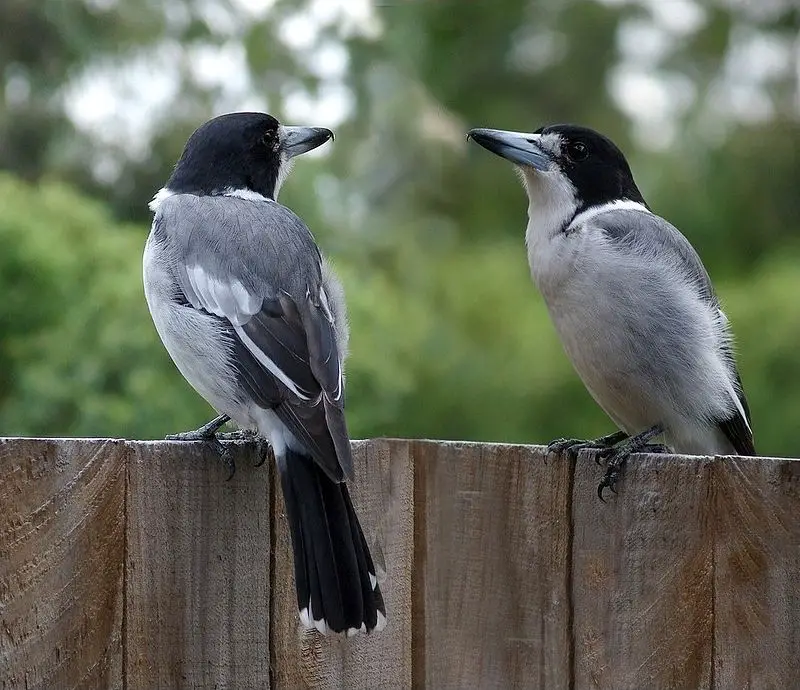
The Grey butcherbird is a species of bird found exclusively in Australia. It can be found in several different environments, including semi-arid and temperate zones.
The bird has a unique and distinctive birdsong. The Grey butcherbird is absent from the deserts of central Australia and the monsoon tropics of the north. It appears to be adaptable to its surroundings.Scientific classification:
| Kingdom | Animalia |
| Phylum | Chordata |
| Class | Aves |
| Order | Passeriformes |
| Family | Artamidae |
| Genus | Cracticus |
| Species | C. torquatus |
34. Powerful Owl
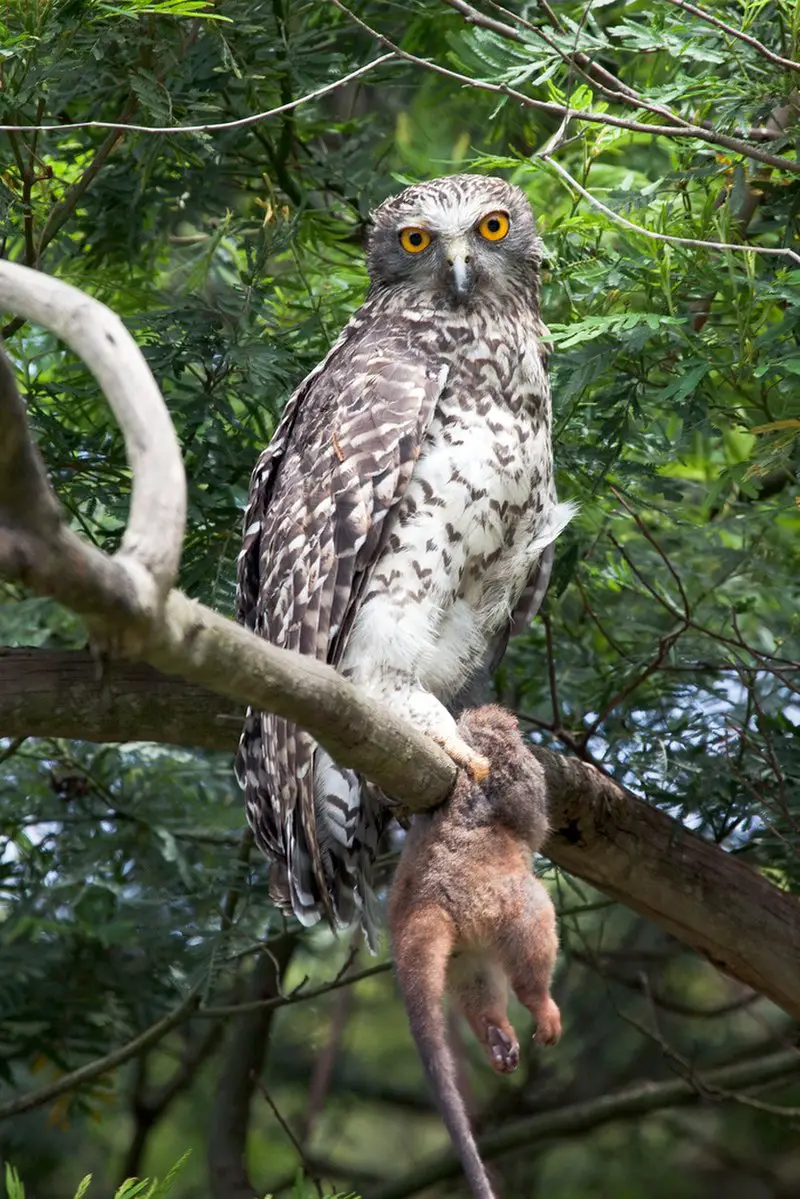
The Powerful Owl, also known as the Powerful Boobook, is the largest owl species in Australia. It can be found in both coastal areas and the Great Dividing Range, though it is rarely found more than 120 miles inland.
These owls are apex predators in their region, hunting a variety of prey. Due to habitat loss, they are listed as a species of concern.
Despite this, they are still able to thrive in some urban areas as long as there is a stable food source available.
With their striking appearance and powerful talons, the Powerful Owl is a magnificent bird and an important part of the Australian ecosystem.Scientific classification:
| Kingdom | Animalia |
| Phylum | Chordata |
| Class | Aves |
| Order | Strigiformes |
| Family | Strigidae |
| Genus | Ninox |
| Species | N. strenua |
Also Featured In: Birds that Live in Gold Coasts,
35. Australian White Ibis
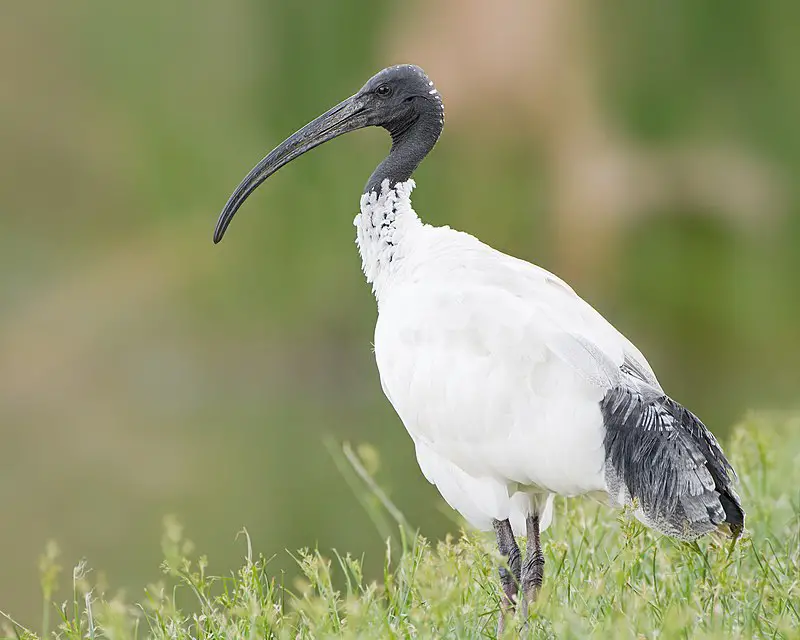
The Australian white ibis is a native wading bird of Australia. With its predominantly white plumage and long downcurved bill, it is easily recognized.
The bird is often found foraging for food on open grasslands, pastures and urban areas such as parks and gardens.
Despite being closely related to the African sacred ibis, the Australian white ibis is a separate species. It has a bare, black head and black legs.
The bird is well adapted to urban environments and often scavenges for food from waste bins or on streets.
While it has been subjected to negative perceptions due to its scavenging behavior, it remains an important member of the Australian ecosystem.Scientific classification:
| Kingdom | Animalia |
| Phylum | Chordata |
| Class | Aves |
| Order | Pelecaniformes |
| Family | Threskiornithidae |
| Genus | Threskiornis |
| Species | T. molucca |
Also Featured In: Water Birds Live around Us, Most Common Western Australia Birds
36. Pacific Black Duck
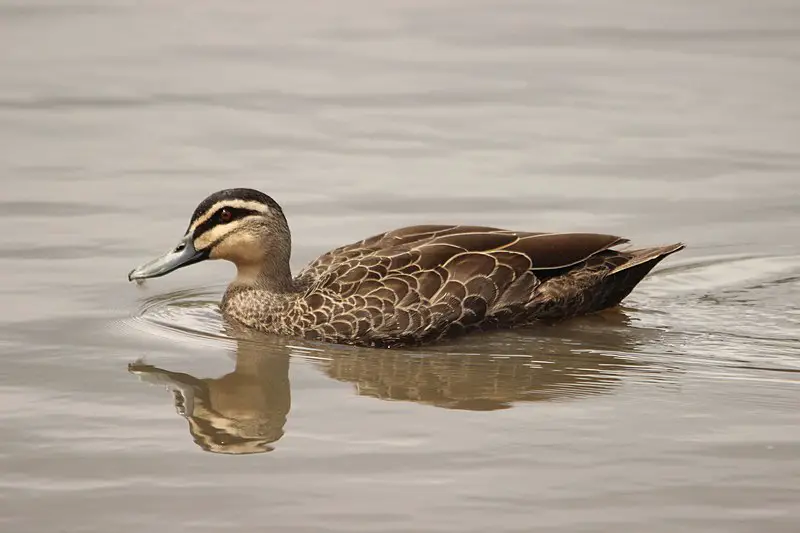
The Pacific black duck, also referred to as the gray duck in New Zealand, is a type of dabbling duck that can be found in numerous countries ranging from Indonesia to French Polynesia.
Its scientific name is Anas superciliosa. In New Zealand, the duck is often called by its Maori name, pārera.
The Pacific black duck lives in a variety of habitats, such as wetlands, marshes, and rice paddies.
It has distinctive features, including a dark body with white specks, a slightly curved beak, and a light-colored crown.
This duck is a common sight in its range, and it feeds on a variety of items such as insects, small fish, and seeds.
The Pacific black duck is an important part of the ecosystem and can even be hunted for food in some areas.Scientific classification:
| Kingdom | Animalia |
| Phylum | Chordata |
| Class | Aves |
| Order | Anseriformes |
| Family | Anatidae |
| Genus | Anas |
| Species | A. superciliosa |
Also Featured In: Small Birds that Live in New South Wales, Black Birds in New Zealand
37. Hardhead
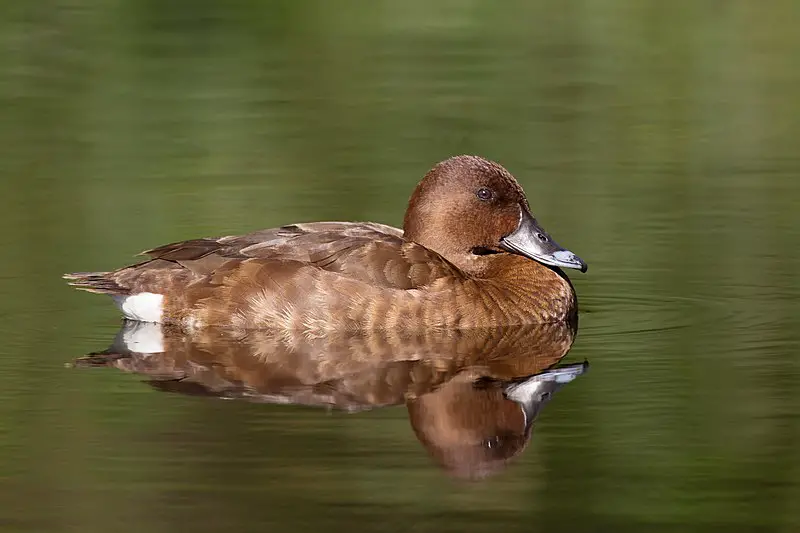
The Hardhead bird, scientifically known as Aythya australis, is the only genuine diving duck found in Australia. Its common name, “hardhead,” refers to the taxidermists’ difficulty processing its head, not its skull’s density.
These birds are typically found in wet coastal regions of Australia, mainly in the southeast. They have white eyes and are usually grey or black with a bluish-black bill.
As diving ducks, Hardheads dive deep into the water to forage for aquatic plants, mollusks, and invertebrates.
They are relatively quiet birds with a harsh, low quack sound. Hardheads play an important role in aquatic ecosystems as they help to control the growth of certain plants, keep waterways clean, and are preyed upon by larger birds and reptiles.Scientific classification:
| Kingdom | Animalia |
| Phylum | Chordata |
| Class | Aves |
| Order | Anseriformes |
| Family | Anatidae |
| Genus | Aythya |
| Species | A. australis |
Also Featured In: Birds that Charles Darwin Studied,
38. Straw-Necked Ibis
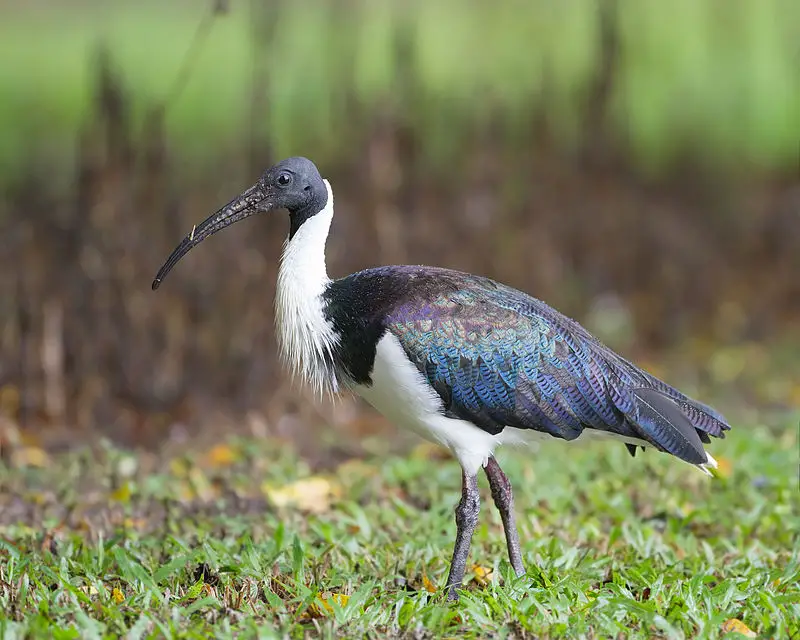
The Straw-necked ibis is a large bird that belongs to the Threskiornithidae family. It can be found in different parts of the world such as Australia, New Guinea, and Indonesia.
These birds are easily identifiable by their distinctive features such as their long, down-curved black bill, bare black head, and straw-like feathers on their necks. They can grow up to 76 cm in length and are known to be active during the day.
The Straw-necked ibis feeds on a variety of things such as insects, frogs, fish, and small reptiles.
They are known for having a loud call that can be heard from a distance. These birds are social creatures that can often be seen in flocks of up to 100 individuals.
The Straw-necked ibis is a beautiful bird that plays an important role in the ecosystem.Scientific classification:
| Kingdom | Animalia |
| Phylum | Chordata |
| Class | Aves |
| Order | Pelecaniformes |
| Family | Threskiornithidae |
| Genus | Threskiornis |
| Species | T. spinicollis |
39. Magpie-Lark
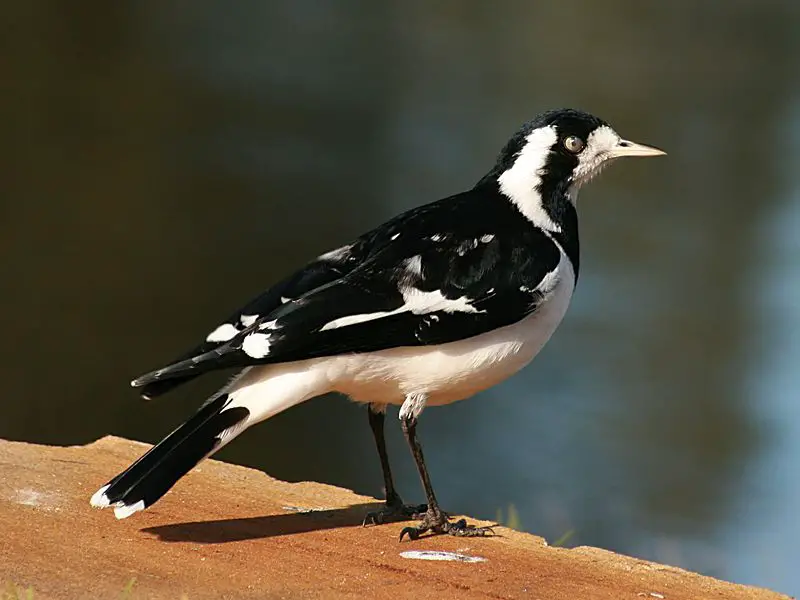
The Magpie-lark is a bird found in Australia, Timor, and southern New Guinea. It has black and white plumage, with different patterns for males and females.
John Latham first described this species in 1801. Formerly known as a mudnest builder, it has been reclassified recently.
The bird has several nicknames such as Wee magpie, Peewee, Peewit, and Mudlark.
It is a passerine bird, and its scientific name is Grallina cyanoleuca. The Magpie-lark is known for its beautiful call, which is similar to the sound “pee-wee.” It is a unique species that adds to the diversity of Australia’s wildlife.
The bird is a favourite among birdwatchers and nature lovers in general.Scientific classification:
| Kingdom | Animalia |
| Phylum | Chordata |
| Class | Aves |
| Order | Passeriformes |
| Family | Monarchidae |
| Genus | Grallina |
| Species | G. cyanoleuca |
Also Featured In: Birds that Live Near Adelaide,
40. Willie Wagtail
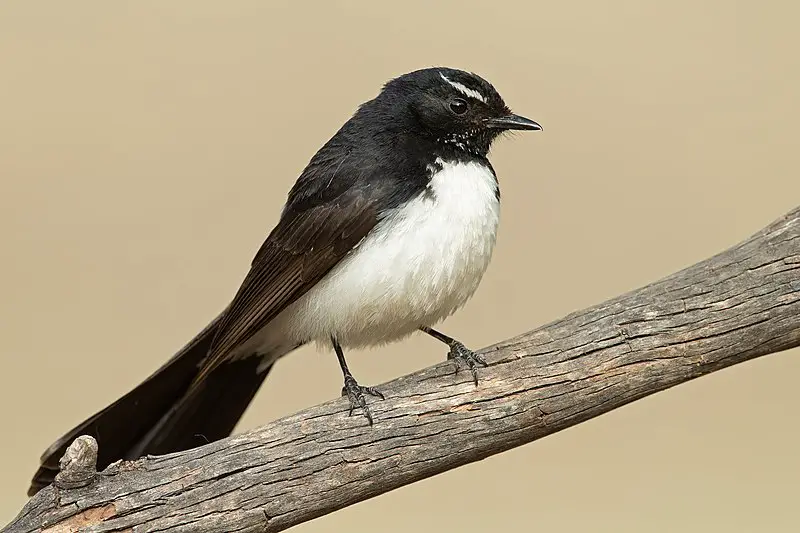
The Willie wagtail is a well-known bird in Australia, New Guinea, and other nearby regions. With its contrasting black and white plumage, this passerine bird stands out in most habitats, except for dense forests.
Its small size, measuring around 19- 21.5 cm in length, hints at its swift movements as it flies and dances through the air.
The Willie wagtail is a master of acrobatics and can quickly change direction while catching insects on the fly.
Its tendency to wag its tail up and down is how it got its name. This bird is a common sight in gardens, parks, and other open spaces, where it feeds on insects and small invertebrates.
Despite its size, the Willie wagtail is a bold and fearless bird and will attack much larger birds that threaten its territory.
Overall, this charming bird is a delight to observe in the wild.Scientific classification:
| Kingdom | Animalia |
| Phylum | Chordata |
| Class | Aves |
| Order | Passeriformes |
| Family | Rhipiduridae |
| Genus | Rhipidura |
| Species | R. leucophrys |
41. Royal Spoonbill

The royal spoonbill is a large bird found in wetlands across Australia, New Zealand, Papua New Guinea, and the Solomon Islands. Known for its distinctive spoon-shaped bill, it feeds on small fish, crustaceans, and insects in intertidal flats and shallow waters.
This black-billed spoonbill is also sometimes sighted as a vagrant in New Caledonia. In New Zealand, it is called kōtuku ngutupapa by the Māori people.
The royal spoonbill is often seen wading through water with its head bobbing back and forth as it searches for prey.
Its striking all-white plumage and bright yellow crest make it a popular sight for birdwatchers and nature enthusiasts.
The royal spoonbill is a fascinating bird, perfectly adapted to its aquatic habitat and always a delight to see in the wild.Scientific classification:
| Kingdom | Animalia |
| Phylum | Chordata |
| Class | Aves |
| Order | Pelecaniformes |
| Family | Threskiornithidae |
| Genus | Platalea |
| Species | P. regia |
Also Featured In: Birds of New Caledonia,
42. Australian Wood Duck
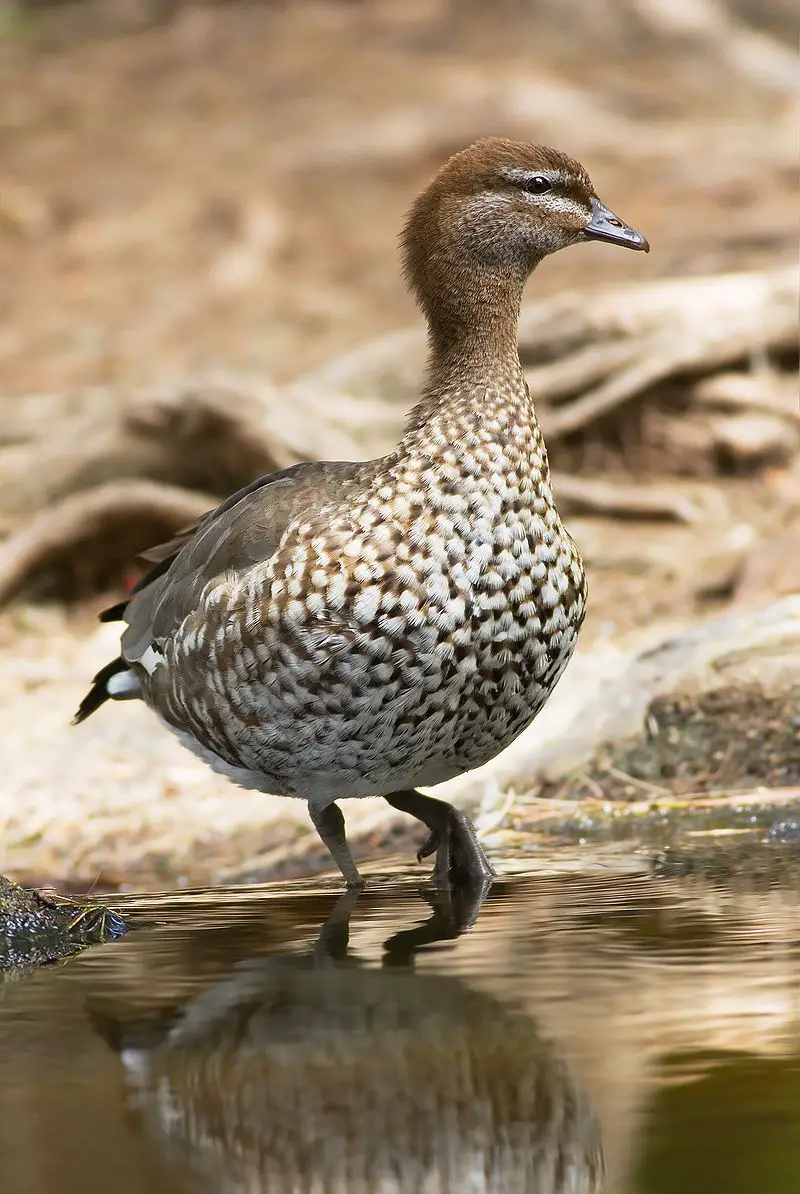
The Australian wood duck is a common waterbird species found throughout the country. It’s also known as the maned duck or maned goose due to its uniquely arranged feathers on the neck resembling a mane.
Interestingly, it’s the only species in the Chenonetta genus. Although typically considered a dabbling duck, recent studies suggest it may belong to the subfamily Tadorninae or shelducks. The species’ closest living relative is thought to be the ringed teal.
Australian wood ducks are medium-sized, with a distinctive plumage of gray, brown, and black, with males having brighter coloration than females.
They can be found near a variety of water sources, from wetlands to parks, and are known for their loud calls and social nature.Scientific classification:
| Kingdom | Animalia |
| Phylum | Chordata |
| Class | Aves |
| Order | Anseriformes |
| Family | Anatidae |
| Genus | Chenonetta |
| Species | C. jubata |
43. Eastern Spinebill
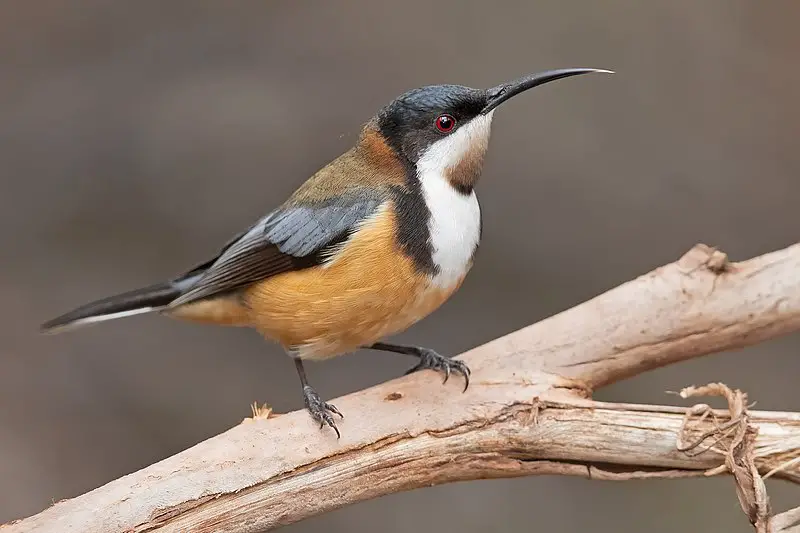
The Eastern spinebill, a honeyeater species, can be found in south-eastern Australia in various habitats, including forest, woodland, and urban gardens in Canberra, Sydney, Melbourne, and Adelaide.
It is distinguishable by its unique black, white, and chestnut feathers, a red eye, and a long bill that curves downwards.
It measures approximately 15 cm in length. The bird was originally identified as Certhia tenuirostris by an English ornithologist.
This bird species is famous for its love of nectar and the way it hovers in front of flowers to feed, leading to cross-pollination.
The Eastern spinebill is popular among birdwatchers due to its eye-catching plumage and its presence in urban areas. The species has an affinity for garden beds that have desirable nectar plants.
This bird is known for its swift and agile flying, which enables it to dart away from predators quickly.Scientific classification:
| Kingdom | Animalia |
| Phylum | Chordata |
| Class | Aves |
| Order | Passeriformes |
| Family | Meliphagidae |
| Genus | Acanthorhynchus |
| Species | A. tenuirostris |
44. Eastern Rosella
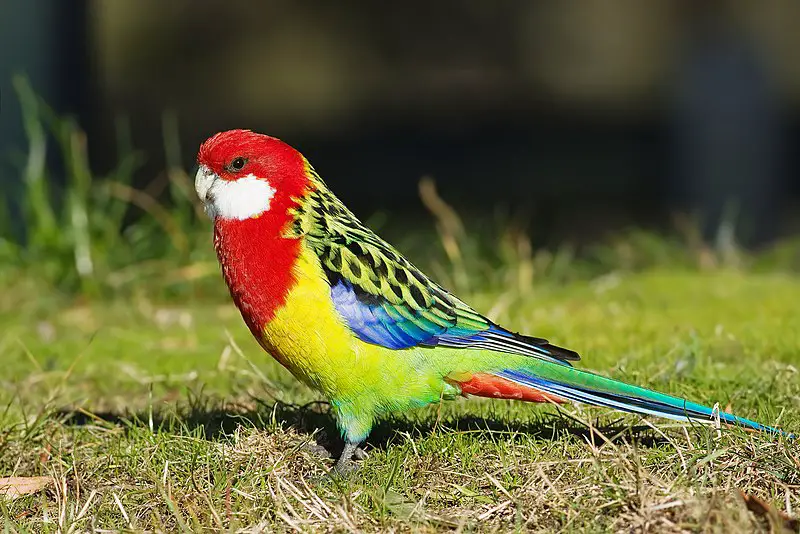
The Eastern Rosella bird is a native species of southeastern Australia and Tasmania. It has also been introduced to New Zealand and can be found in feral populations in the North Island and around Dunedin in the South Island.
The bird was first named by George Shaw. Eastern Rosellas are known for their colorful feathers, which generally include a bright red head, white cheeks, and yellow and green wings. They also have long tails and a distinctive beak shape.
These birds are typically found in wooded areas and have a varied diet that includes seeds, fruits, flowers, and insects.
Eastern Rosellas are known for their beautiful songs and are a favorite among birdwatchers and nature enthusiasts.Scientific classification:
| Kingdom | Animalia |
| Phylum | Chordata |
| Class | Aves |
| Order | Psittaciformes |
| Family | Psittaculidae |
| Genus | Platycercus |
| Species | P. eximius |
45. Red Wattlebird
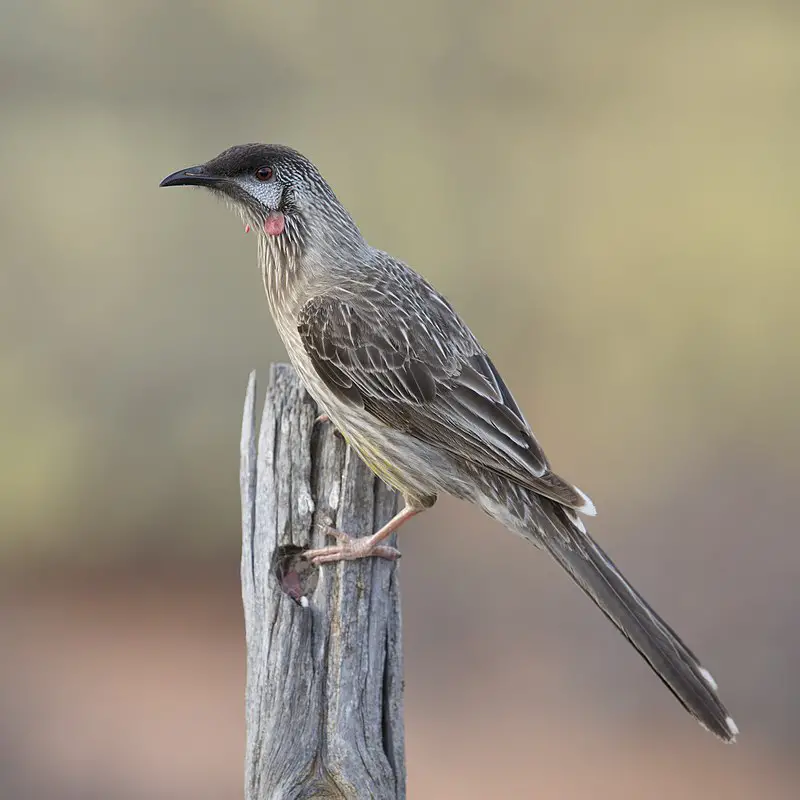
The Red Wattlebird is a large honeyeater found in southern Australia. It has grey-brown feathers, red eyes, and pinkish-red wattles on its neck.
The bird also has white streaks on its chest and a bright yellow patch on its belly.
It measures 33-37 cm in length, making it the second largest Australian honeyeater. The male and female birds have similar physical characteristics.Scientific classification:
| Kingdom | Animalia |
| Phylum | Chordata |
| Class | Aves |
| Order | Passeriformes |
| Family | Meliphagidae |
| Genus | Anthochaera |
| Species | A. carunculata |
46. Little Wattlebird
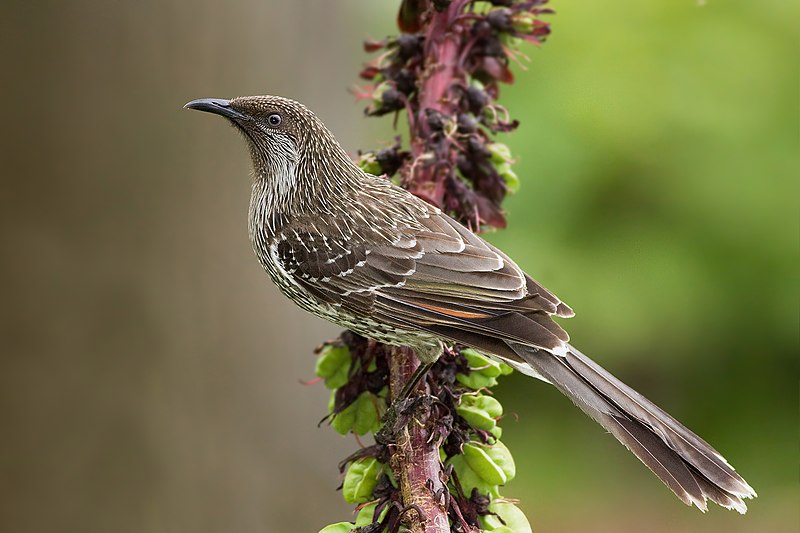
The Little Wattlebird, commonly known as the brush wattlebird, belongs to the Meliphagidae family of passerine birds.
These birds are primarily found in coastal and sub-coastal southeastern Australia.
Ornithologist John Latham described the species for the first time in 1801, under the name Merops chrysoptera.
Today, the Little Wattlebird is categorized under the Anthochaera genus. Although small, these birds possess a distinct wattled appearance and a brush-like tail.
Little Wattlebirds are known for their complex songs, consisting of various clicks, whistles, and harsh calls.
They feed on insects, nectar, fruit, and pollen, using their long, curved beaks to extract nectar.
These birds are known to be territorial and active communicators, making them a fascinating species to observe in their natural habitat.Scientific classification:
| Kingdom | Animalia |
| Phylum | Chordata |
| Class | Aves |
| Order | Passeriformes |
| Family | Meliphagidae |
| Genus | Anthochaera |
| Species | A. chrysoptera |
Also Featured In: Birds that Live in Kangaroo Island,
47. Musk Lorikeet
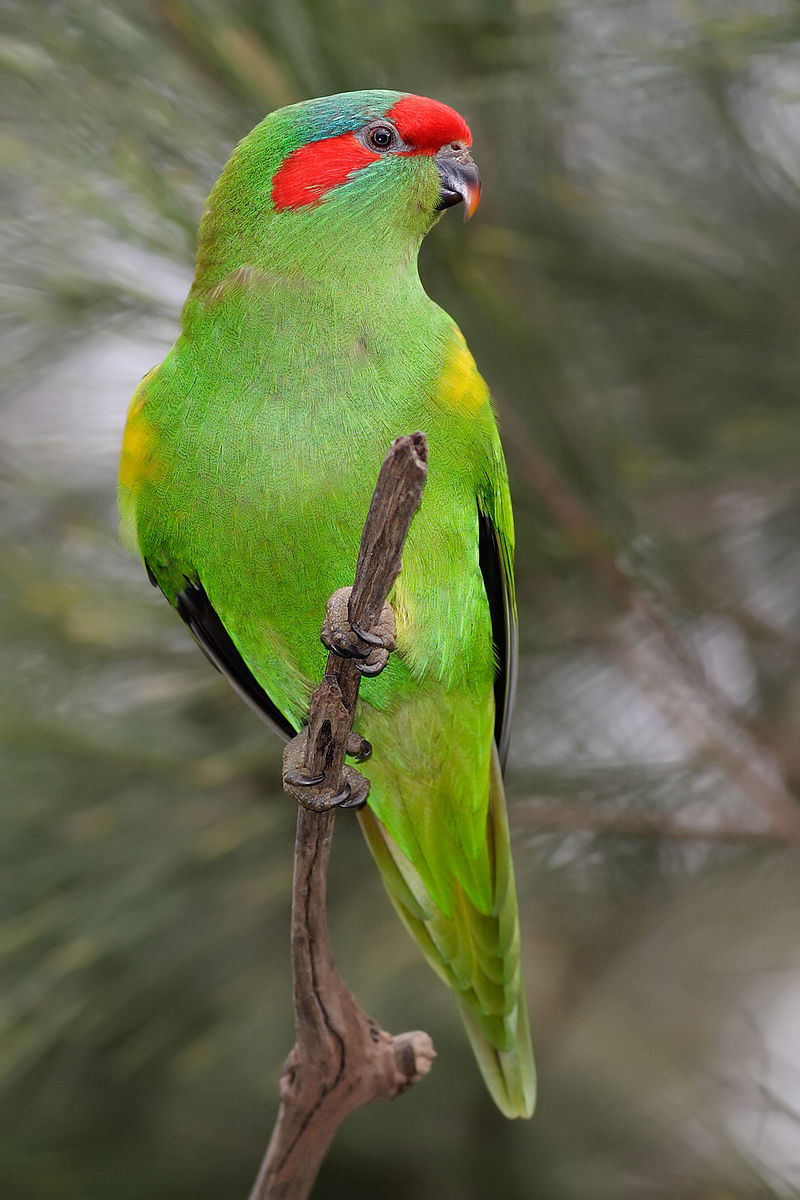
The musk lorikeet is a species of lorikeet found in south-central and eastern Australia. It is the only species in the genus Glossopsitta. The little lorikeet and purple-crowned lorikeet were once classified in the same genus.
First described by ornithologist George Shaw in 1790, the musk lorikeet resides in the Port Jackson vicinity.
It is a small bird with a distinct green plumage and a red face, as well as a pointed tail. Its diet consists mainly of nectar and pollen.
The species is known for its distinct call, which can be heard in flight or when the birds are gathered together.
The musk lorikeet tends to form large communal groups and can often be seen flying in flocks.Scientific classification:
| Kingdom | Animalia |
| Phylum | Chordata |
| Class | Aves |
| Order | Psittaciformes |
| Family | Psittaculidae |
| Tribe | Loriini |
| Genus | Glossopsitta Bonaparte, 1854 |
| Species | G. concinna |
48. Eastern Yellow Robin
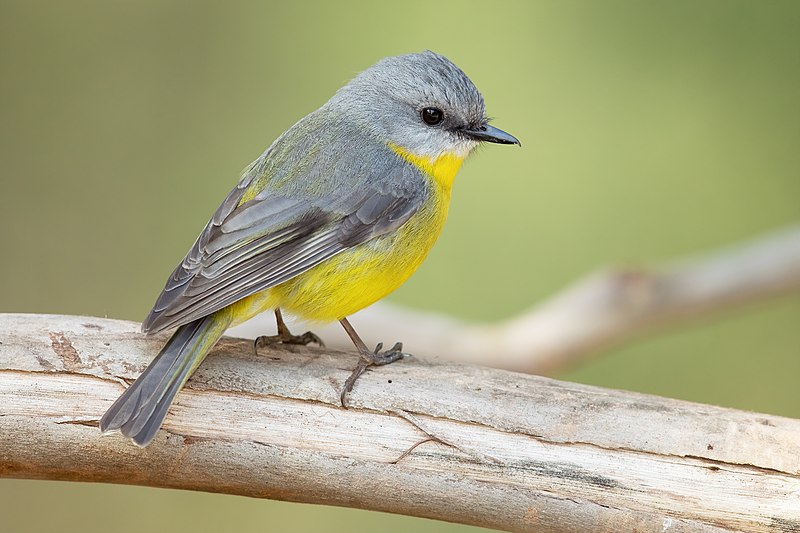
The Eastern yellow robin is a native bird found in coastal and sub-coastal regions of eastern Australia.
With a range extending from South Australia to as far north as Cooktown in Queensland, these birds prefer to live in warm forest areas.
Their bright yellow breast makes them easily recognizable, while their small size and chirpy songs make them a popular sight among birdwatchers.
Eastern yellow robins are known for their friendly nature, often coming very close to humans without fear.
These curious birds are also skilled hunters, preying upon insects and small invertebrates.
In summary, the Eastern yellow robin is a charming bird found in the forests and woodlands of eastern Australia.Scientific classification:
| Kingdom | Animalia |
| Phylum | Chordata |
| Class | Aves |
| Order | Passeriformes |
| Family | Petroicidae |
| Genus | Eopsaltria |
| Species | E. australis |
Also Featured In: Birds that Live in Sunshine Coast,
49. Australian Raven
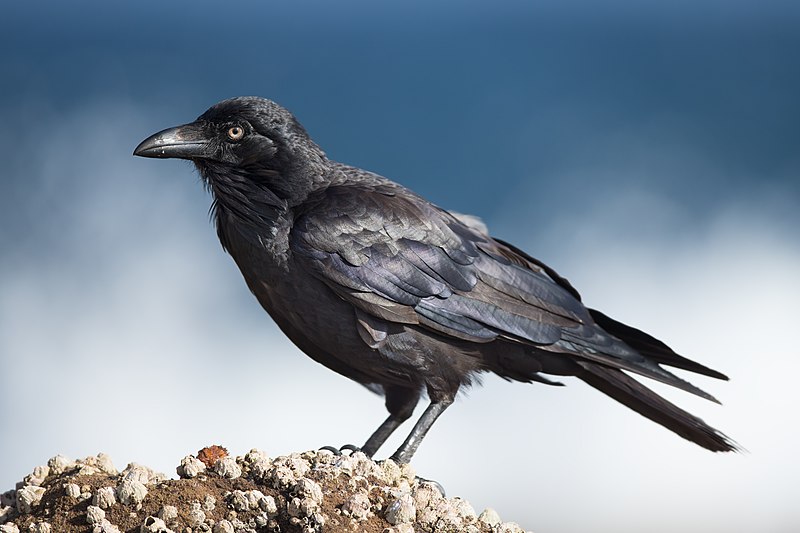
The Australian raven is a striking passerine bird found in southern and northeastern Australia. It boasts an impressive length of 46-53 centimeters, and its sleek black plumage, beak, and mouth contribute to its imposing appearance.
The raven’s strong legs and feet are also colored a deep grey-black, and its black feathers have subtly grey bases. With a glossy purple, blue, or green sheen to its upperparts, this bird cuts a commanding figure.
In addition to its physical attributes, the Australian raven is known for its intelligence and adaptability, and it can often be seen scavenging for food in urban areas.
Overall, this bird is a fascinating member of the Corvus family and a proud representative of Australia’s diverse birdlife.Scientific classification:
| Kingdom | Animalia |
| Phylum | Chordata |
| Class | Aves |
| Order | Passeriformes |
| Family | Corvidae |
| Genus | Corvus |
| Species | C. coronoides |
50. Loriini
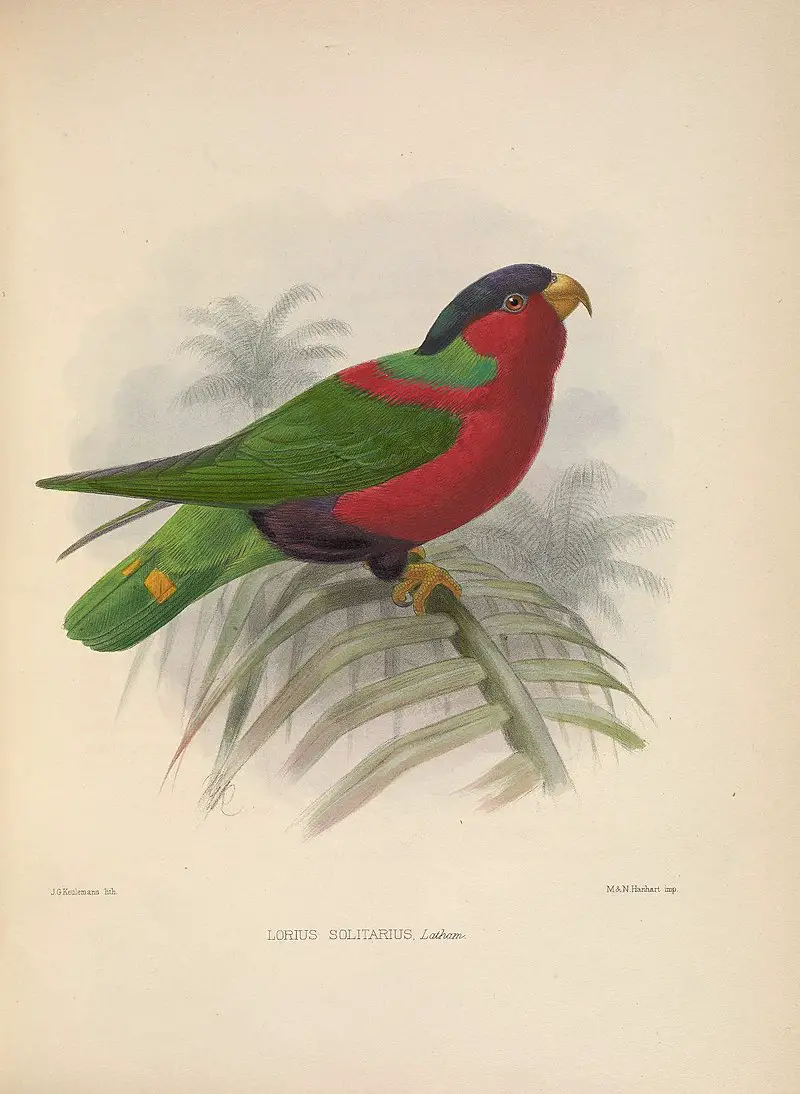
Loriini birds are a tribe of parrots known for their specialized tongues that are brush-tipped for feeding on nectar and soft fruits, such as berries. They are small to medium in size and live in trees.
The Loriini form a monophyletic group within the Psittaculidae family of parrots and includes subgroups such as lories and lorikeets.
While traditionally they were considered a separate subfamily called Loriinae, this is no longer the case.
These birds are known for their bright colors and playful personalities. They are primarily found in the forests of the Pacific and Indian Oceans, with some species also found in Australia.
These birds are important pollinators for many plant species and their diets are important for maintaining the health of many ecosystems.
Overall, Loriini birds are fascinating creatures that play vital roles in their ecosystems.Scientific classification:
| Kingdom | Animalia |
| Phylum | Chordata |
| Class | Aves |
| Order | Psittaciformes |
| Family | Psittaculidae |
| Subfamily | Loriinae |
| Tribe | Loriini Selby, 1836 |
Also Featured In: Case Birds that Live in with Us,
51. Red-Rumped Parrot
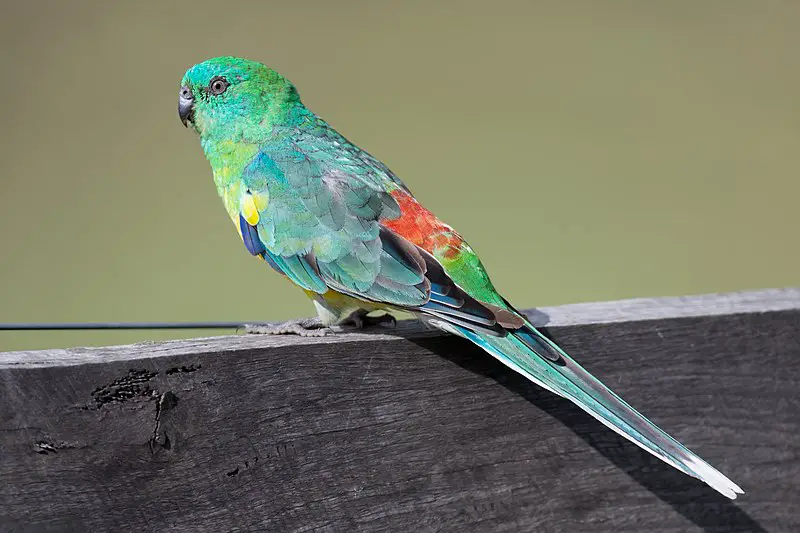
The red-rumped parrot, also called the red-backed parrot or grass parrot, is a widespread bird found in south-eastern Australia. Its scientific name is Psephotus haematonotus, and it was first described by John Gould in 1838.
The bird is quite common in the Murray-Darling Basin region. The red-rumped parrot is a beautiful bird with a red rump, blue wings, and greenish-grey body. It feeds on seeds, fruits and insects, and nests in tree hollows.
The species is popular among bird enthusiasts and is often kept as a pet because of its striking colors and playful personality.
Despite its popularity, the red-rumped parrot faces threats from habitat loss due to land clearing and climate change. Conservation efforts are vital to ensure the survival of this species in the future.Scientific classification:
| Kingdom | Animalia |
| Phylum | Chordata |
| Class | Aves |
| Order | Psittaciformes |
| Family | Psittaculidae |
| Tribe | Platycercini |
| Genus | Psephotus Gould, 1845 |
| Species | P. haematonotus |